
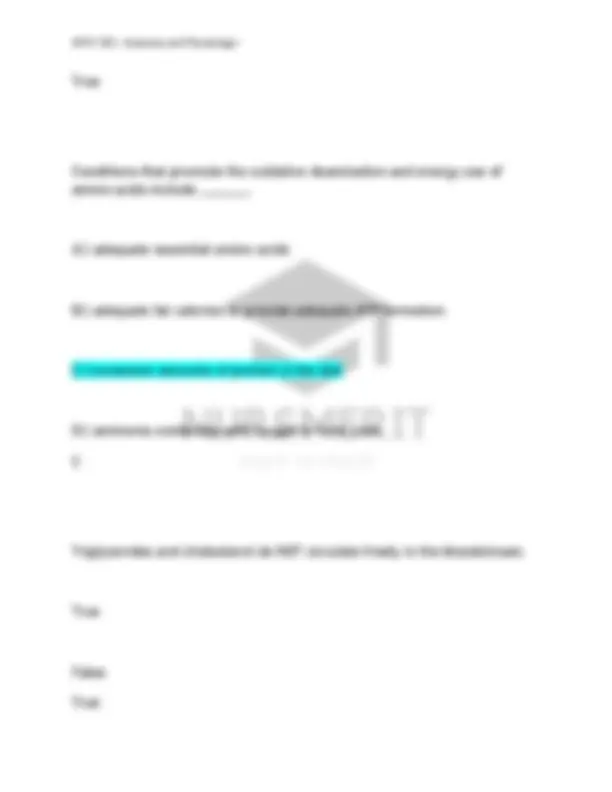

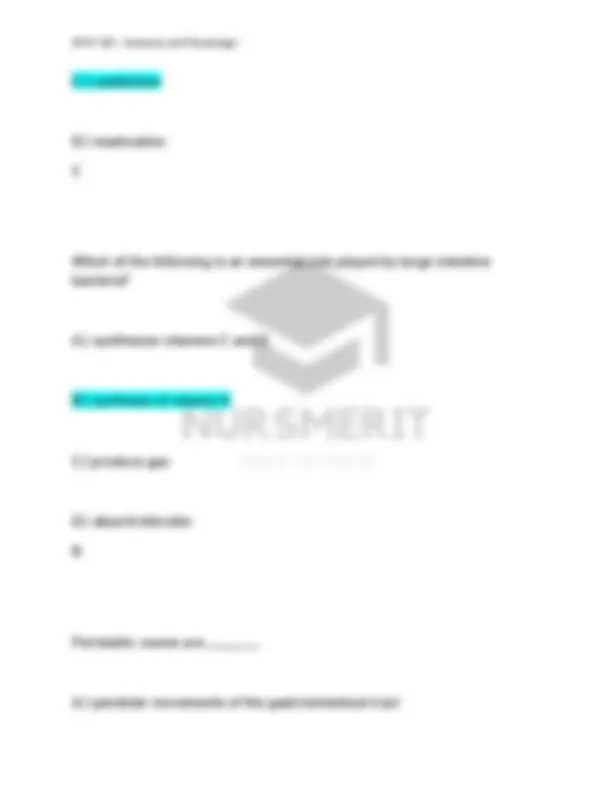
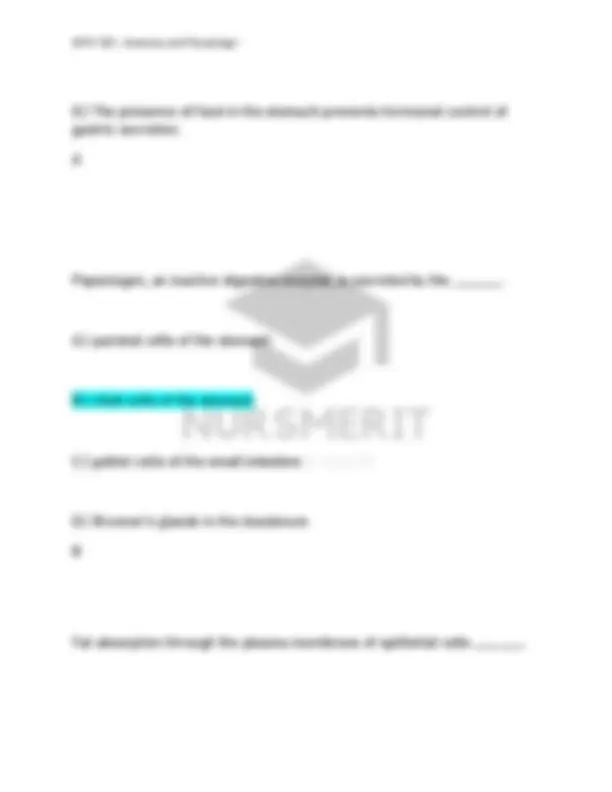
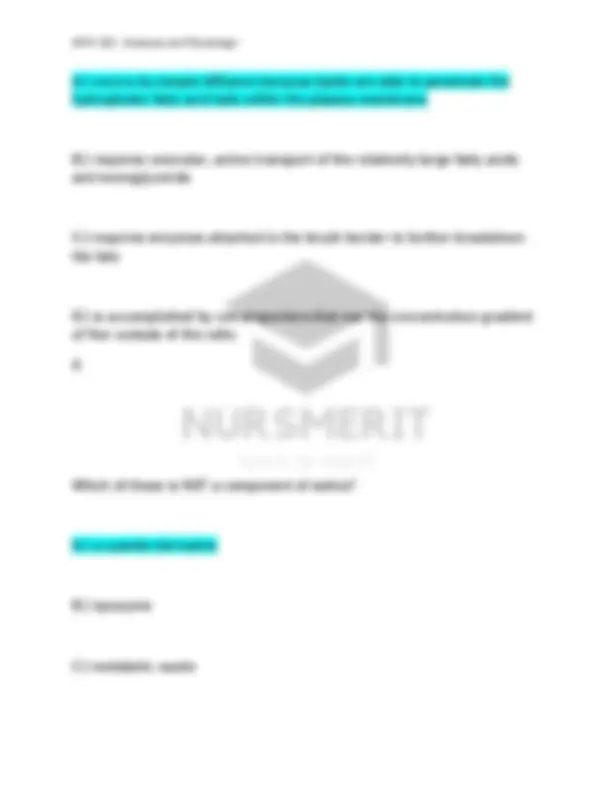


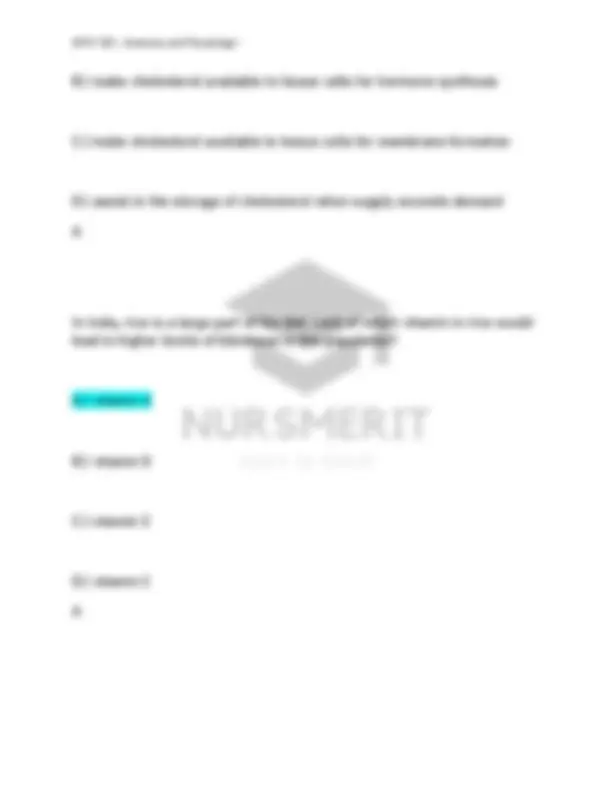


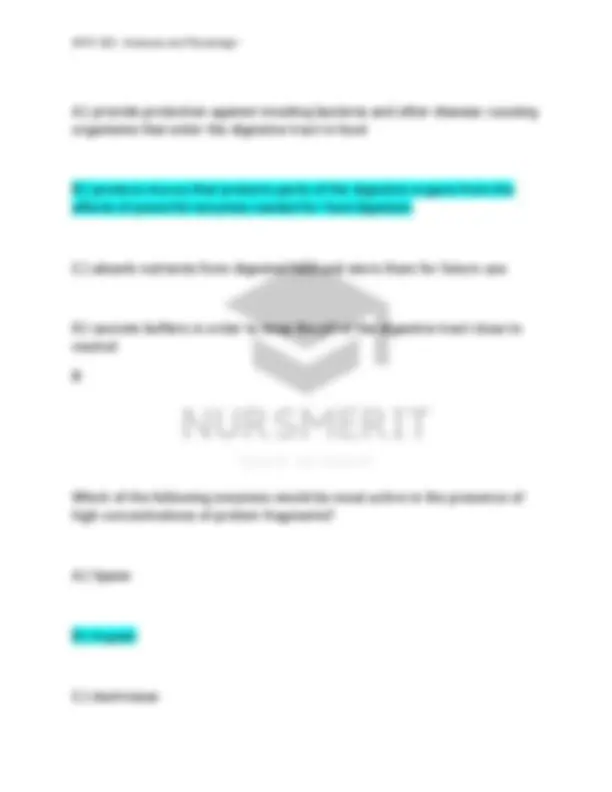
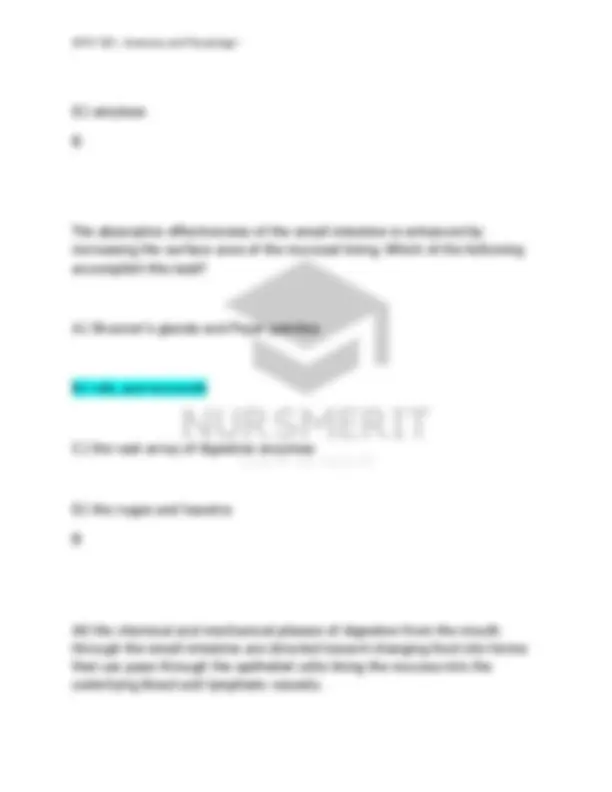

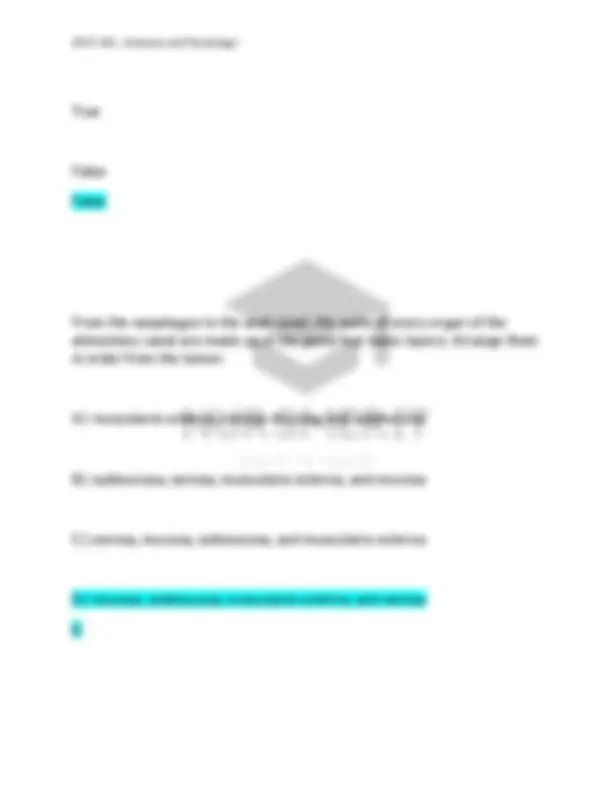


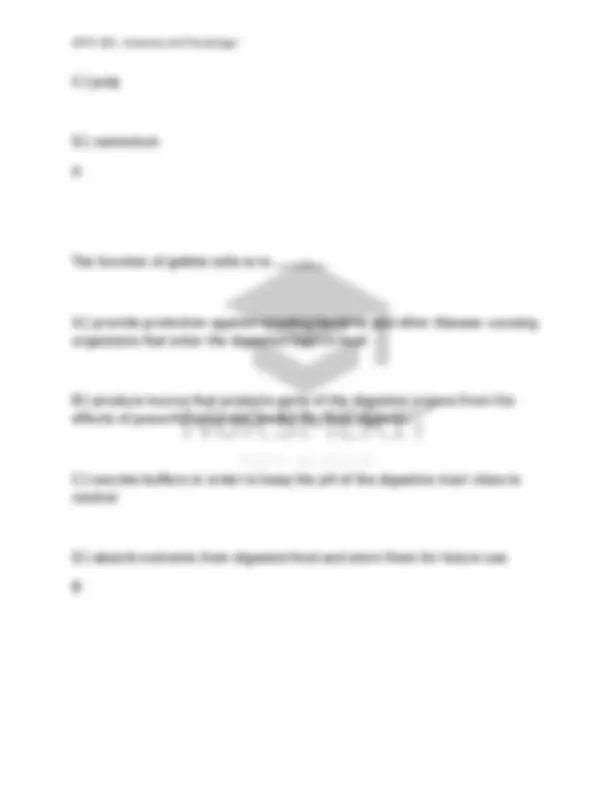
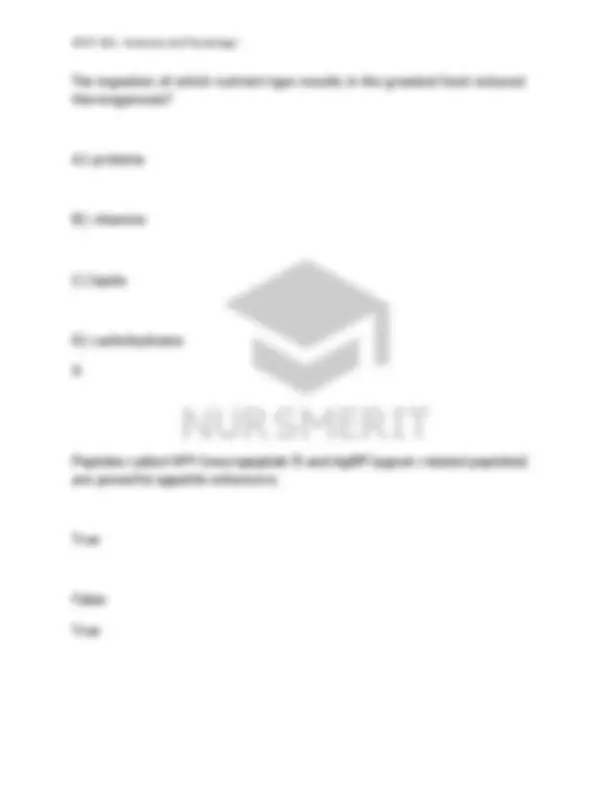
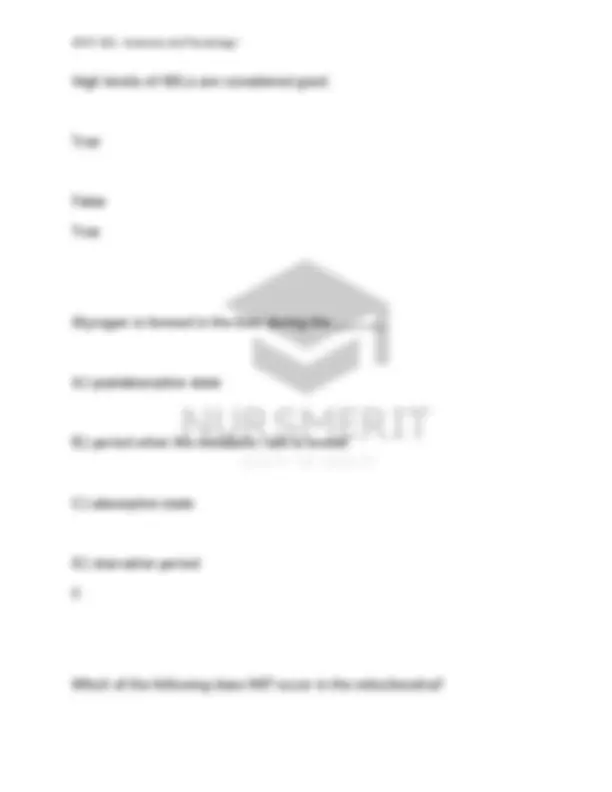
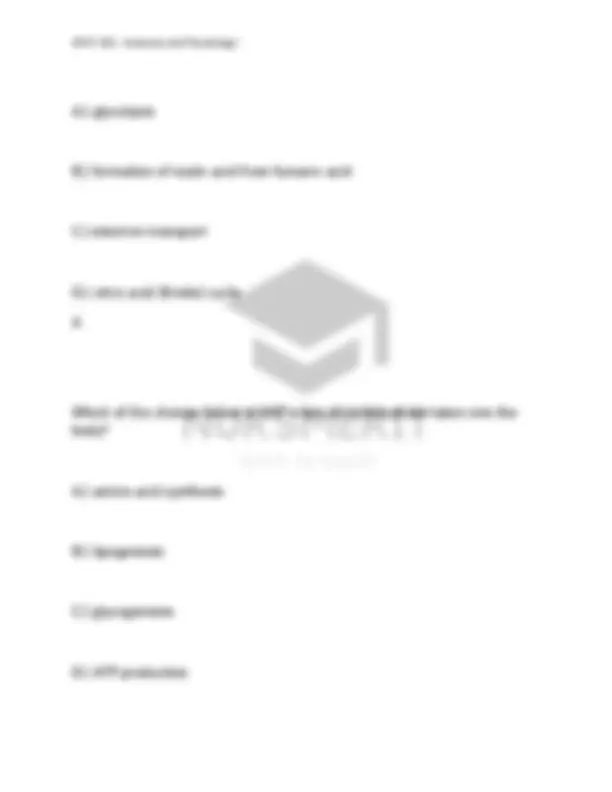
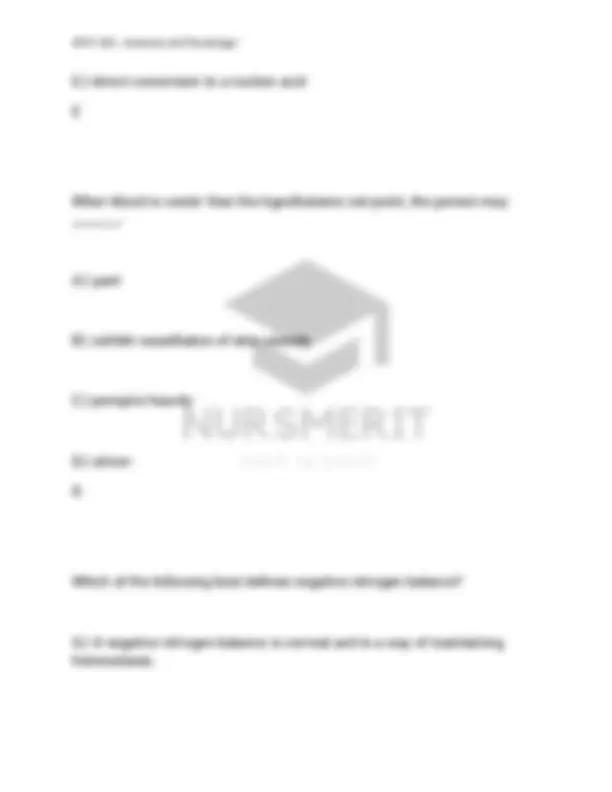
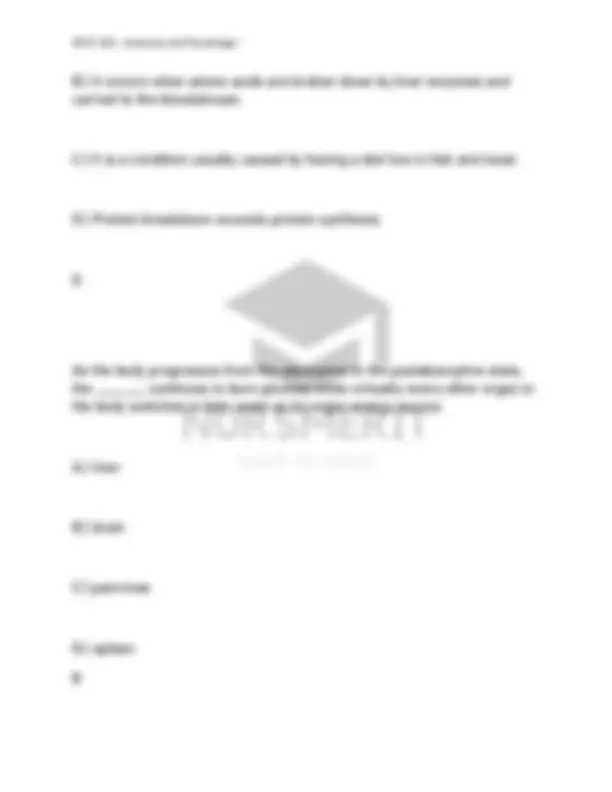
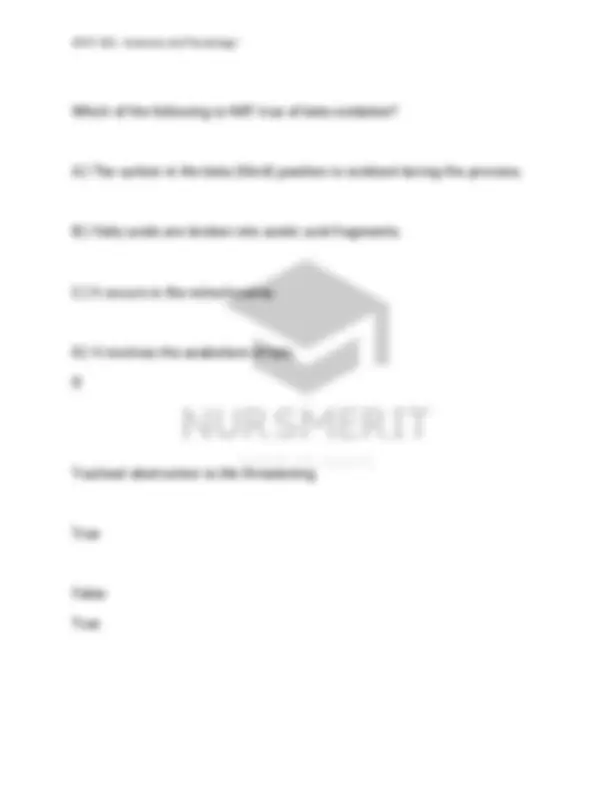
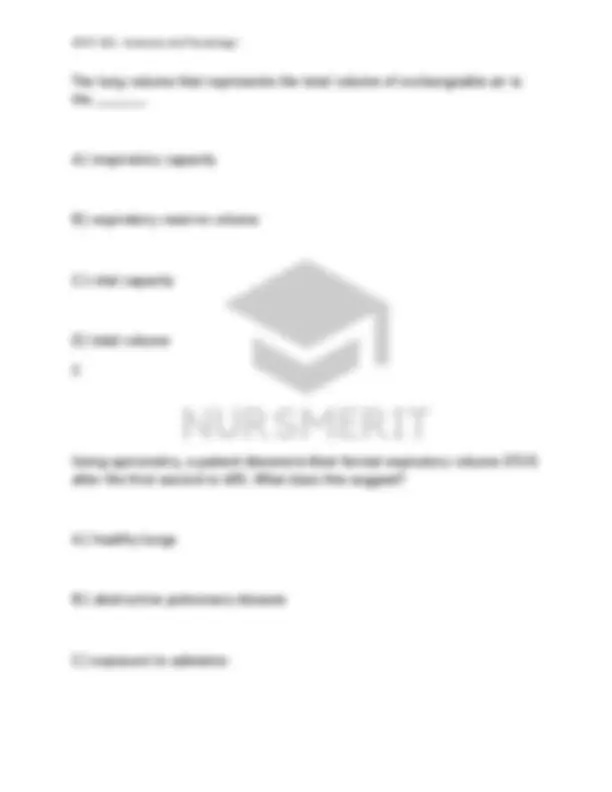
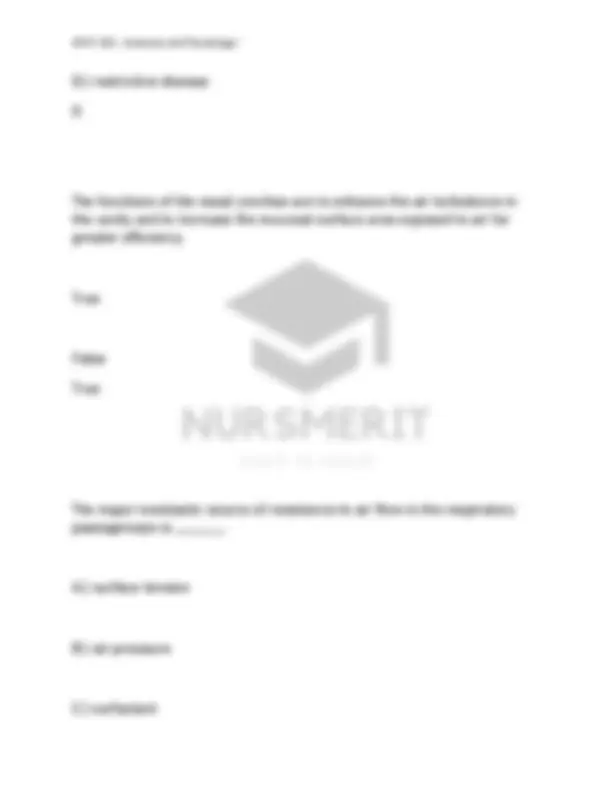
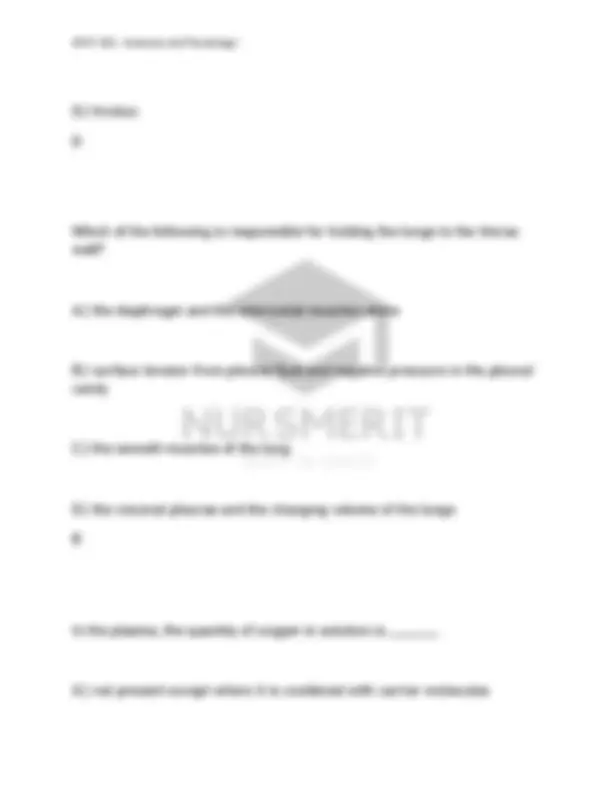
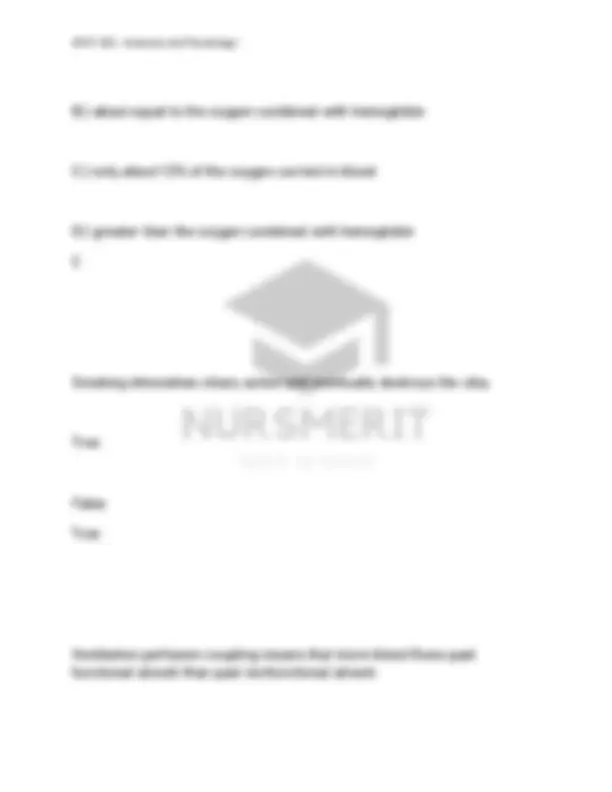
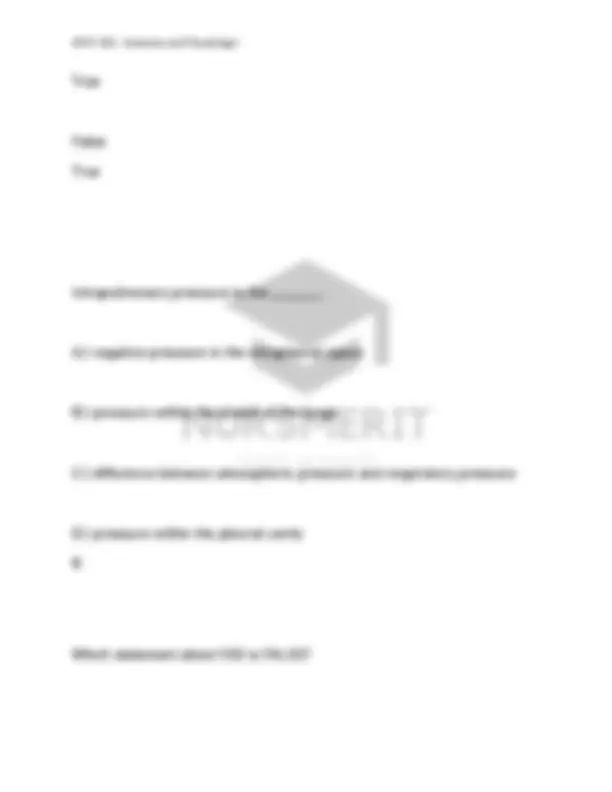
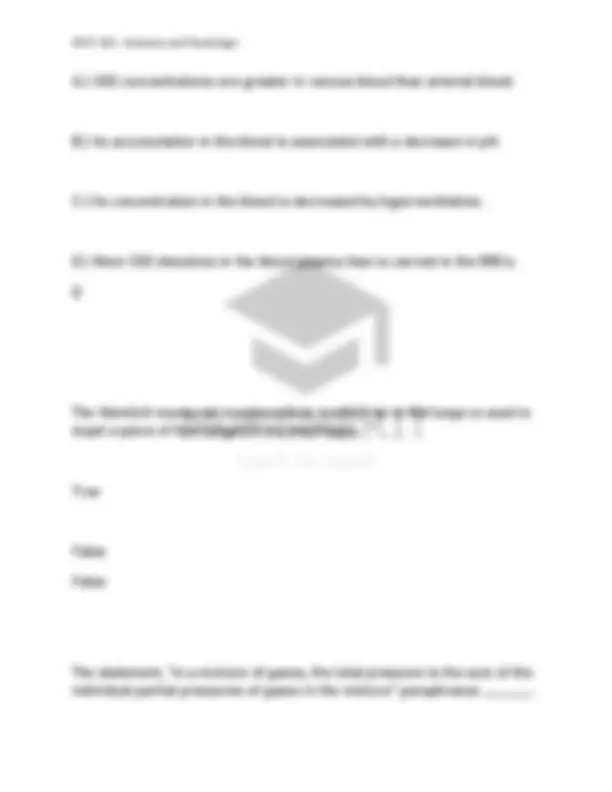
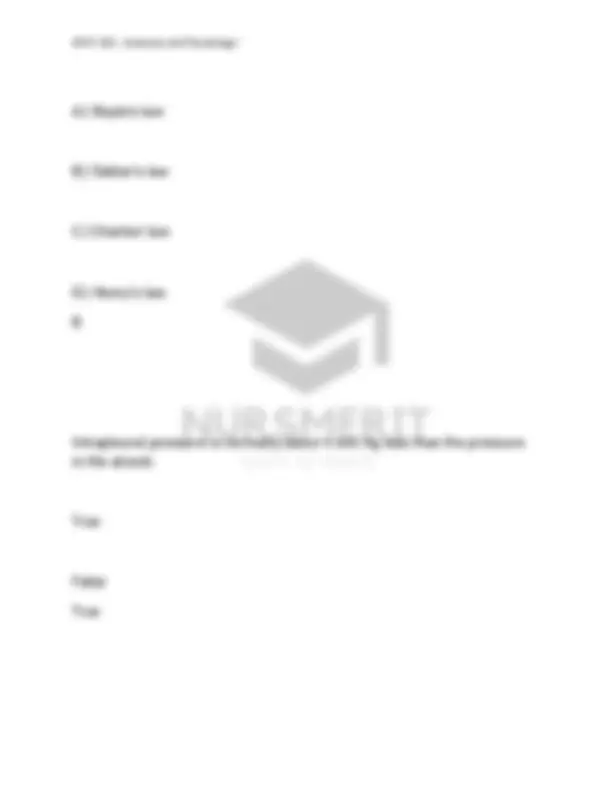
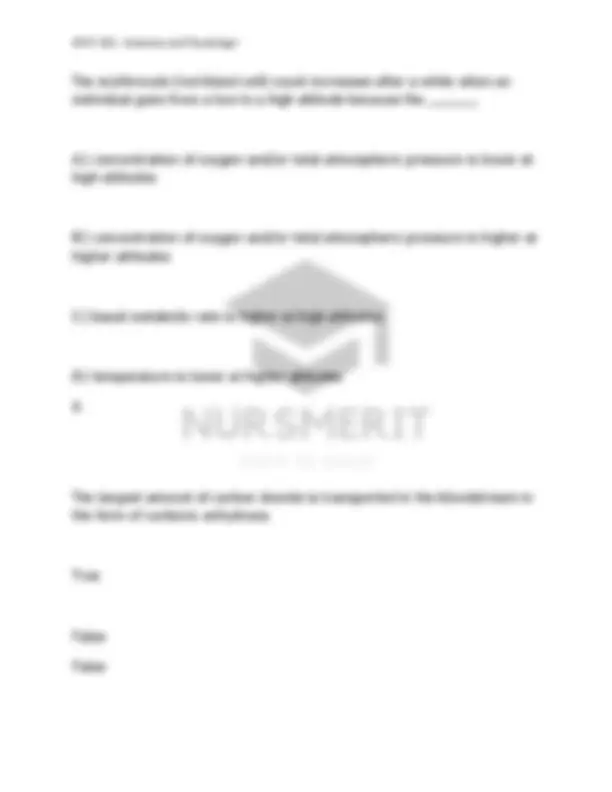
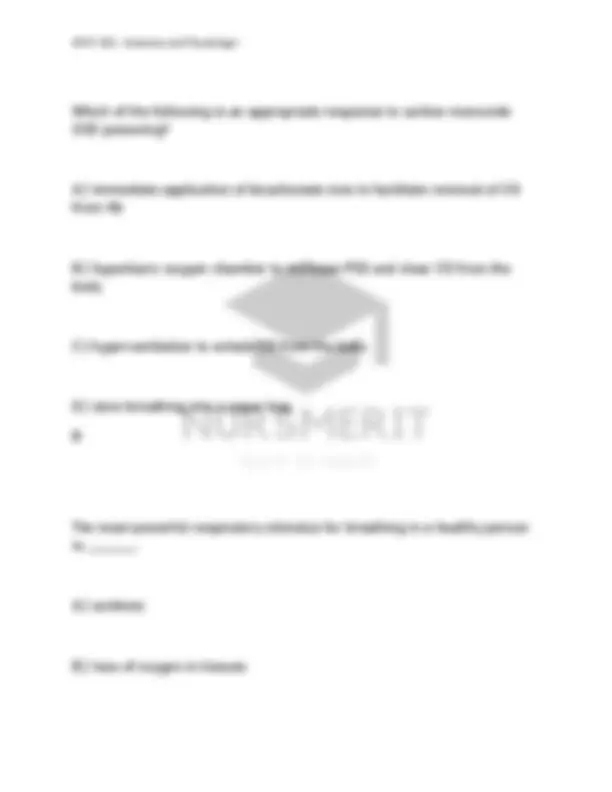
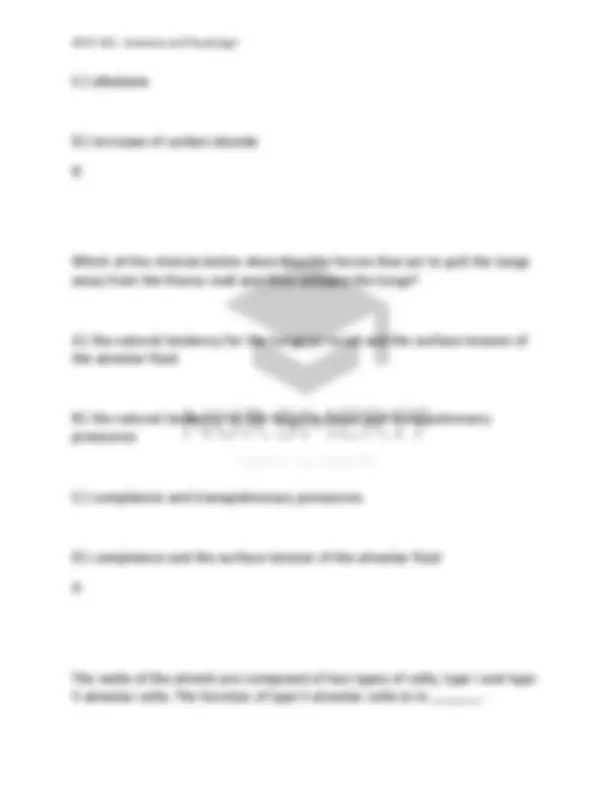
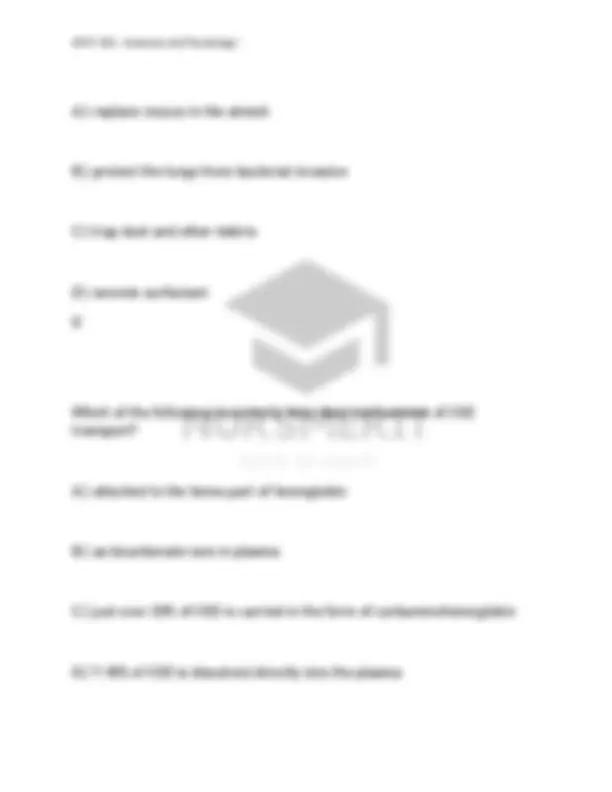
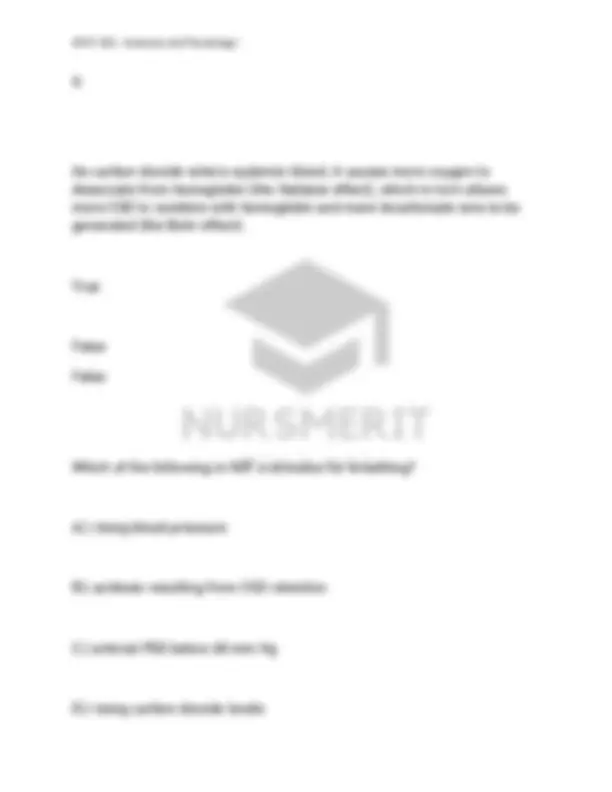

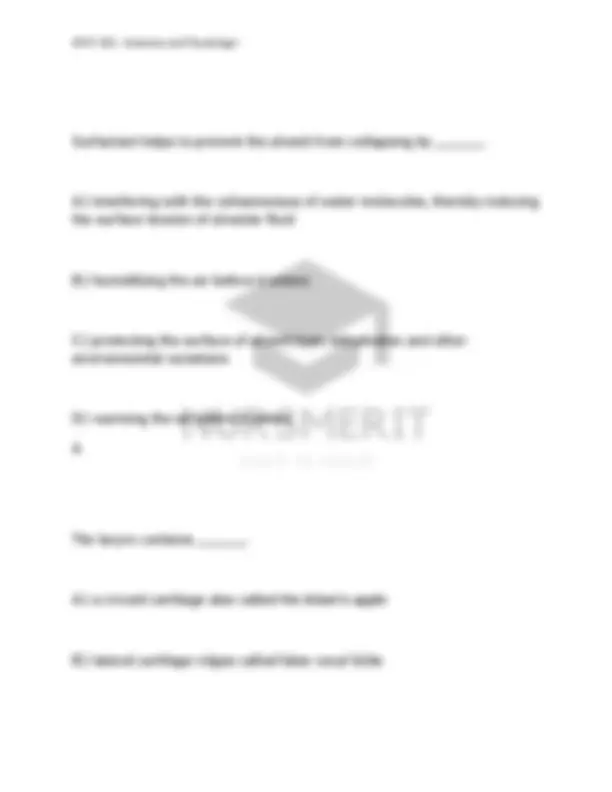
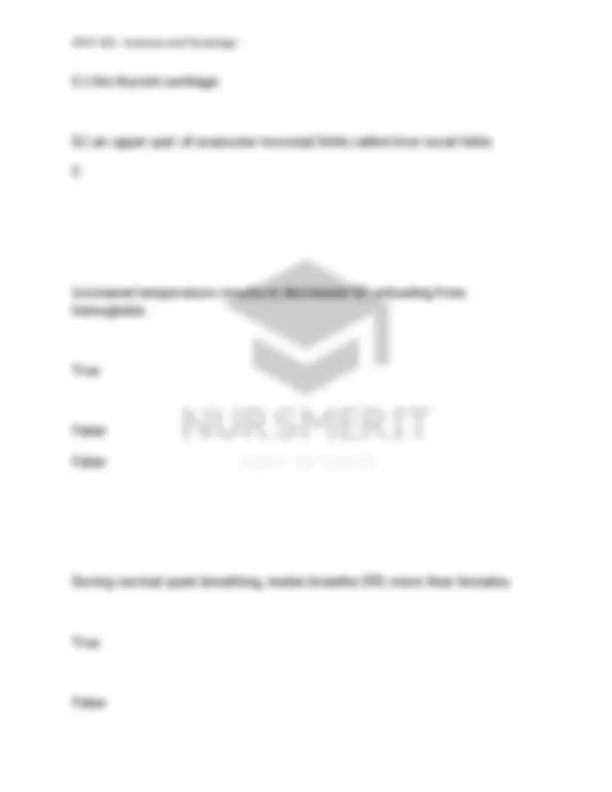
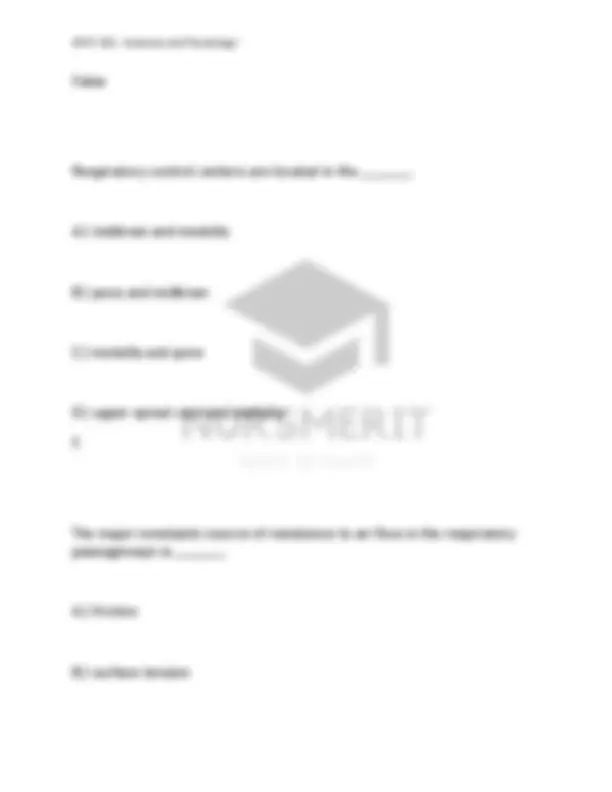
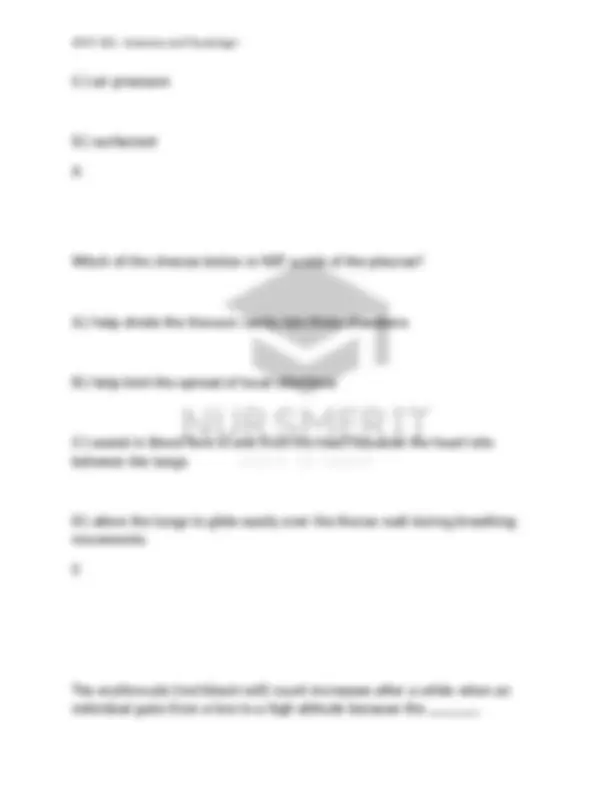
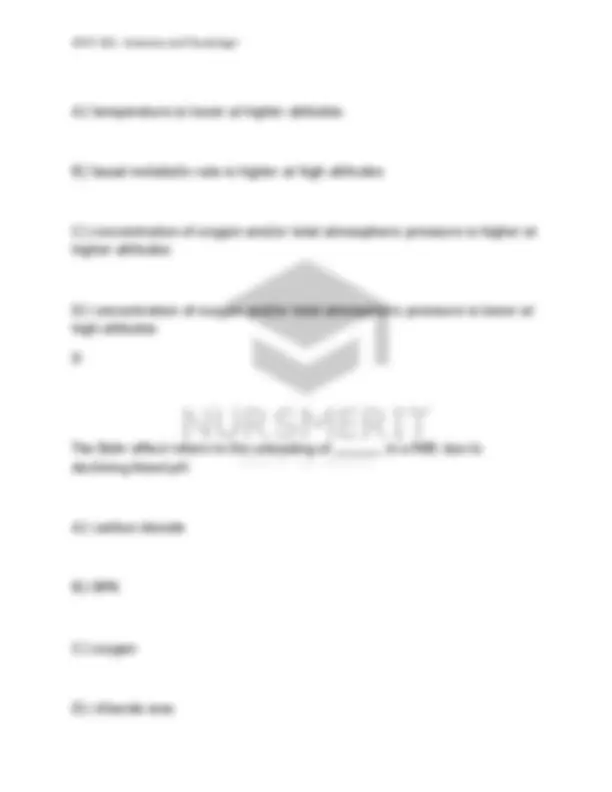
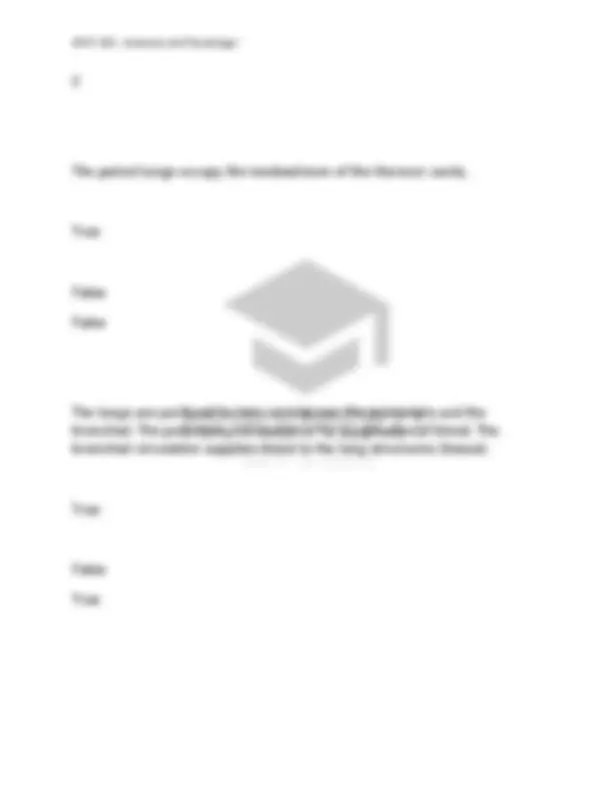
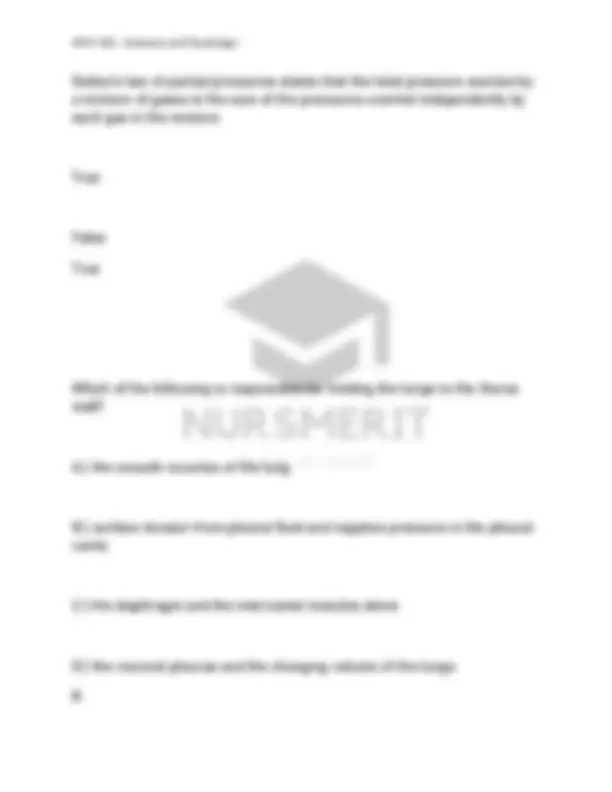
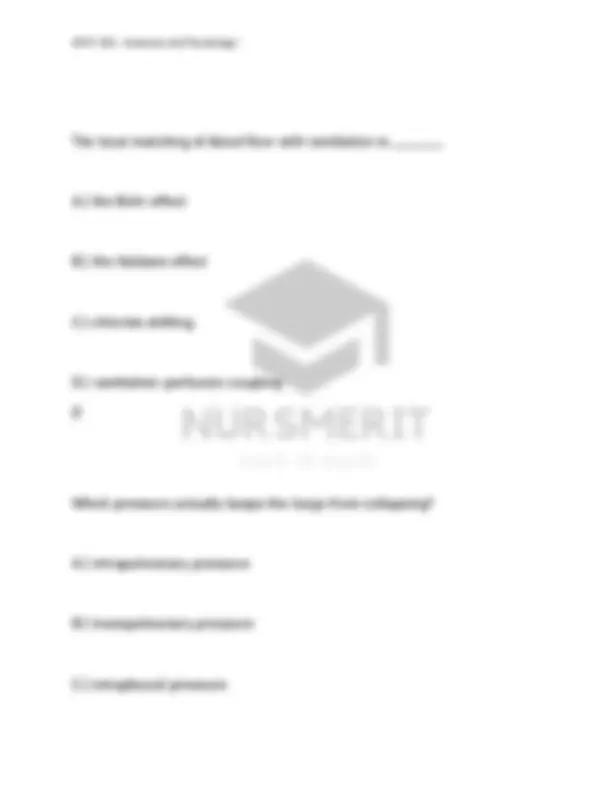
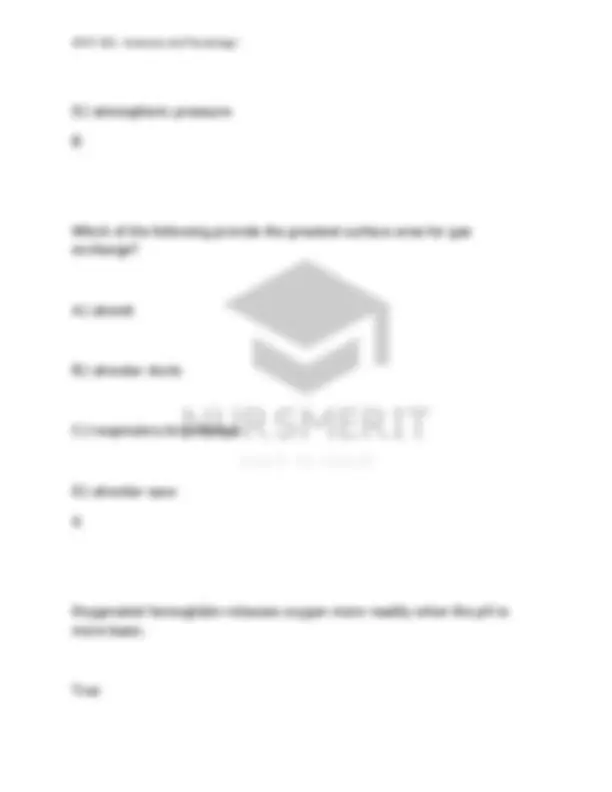
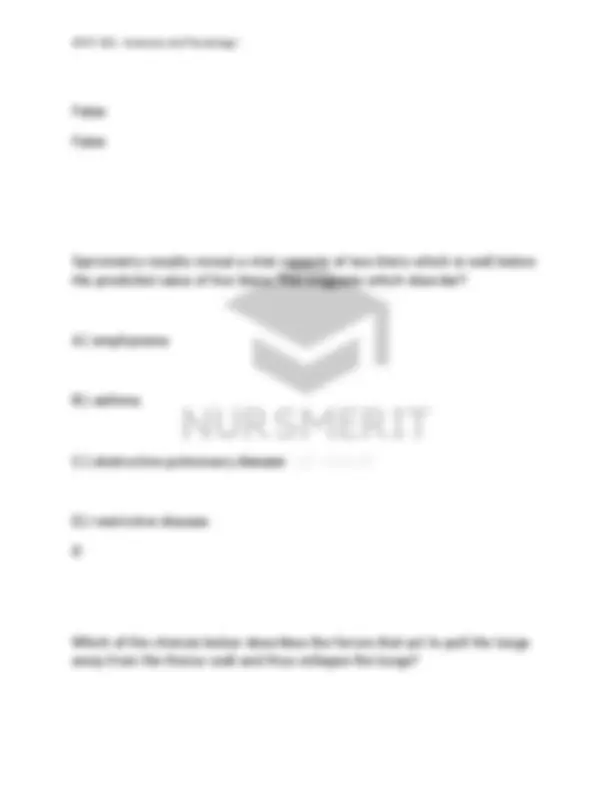
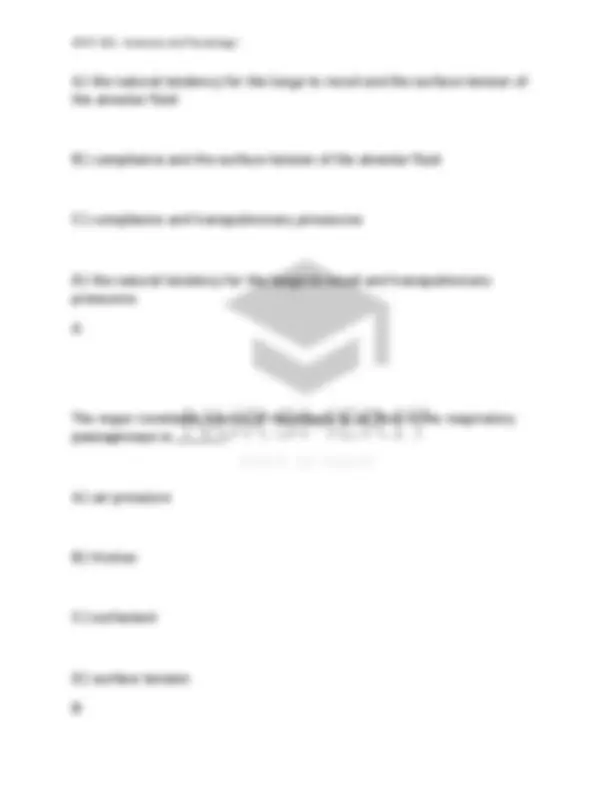
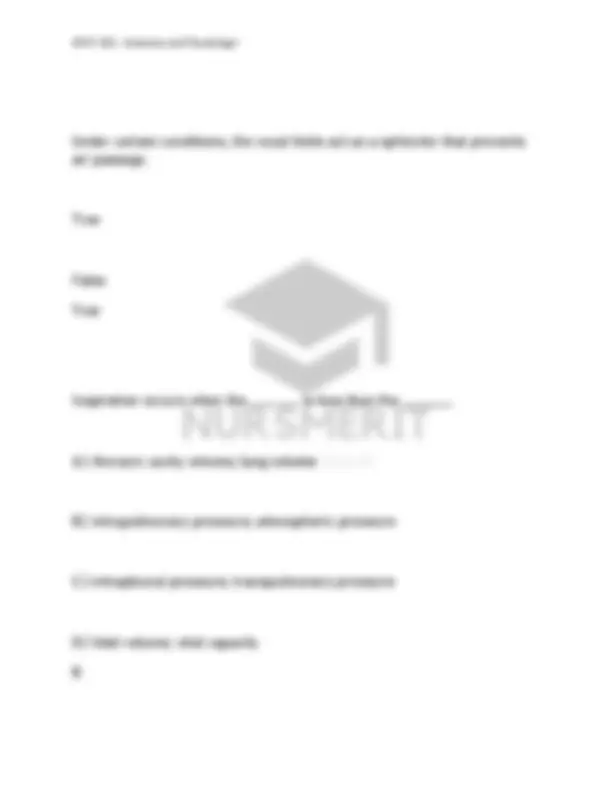
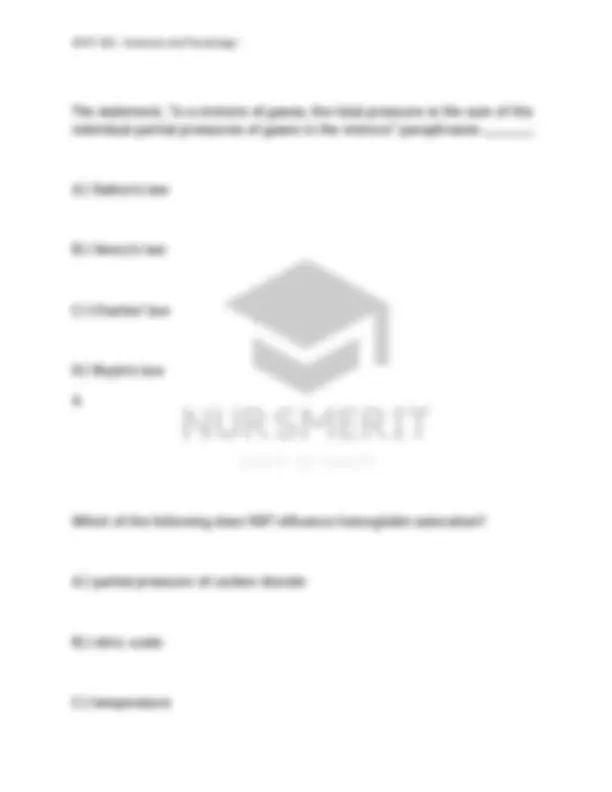
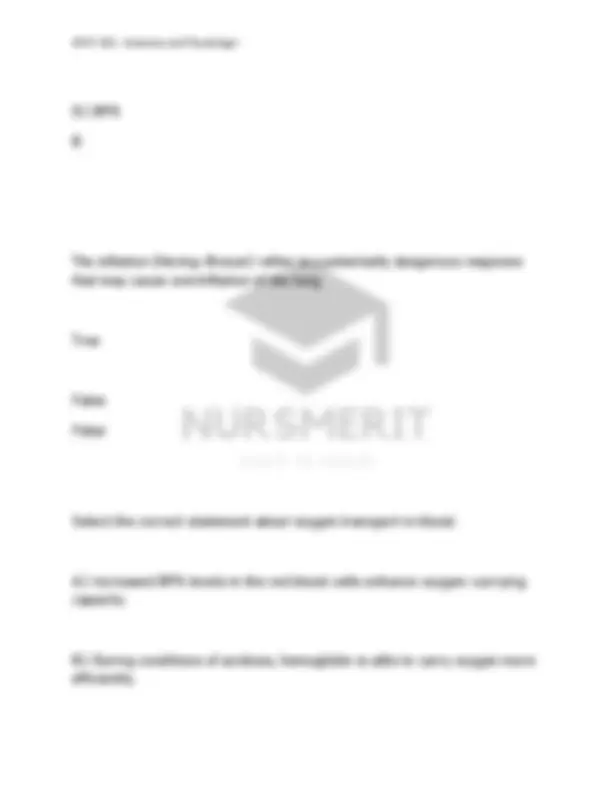
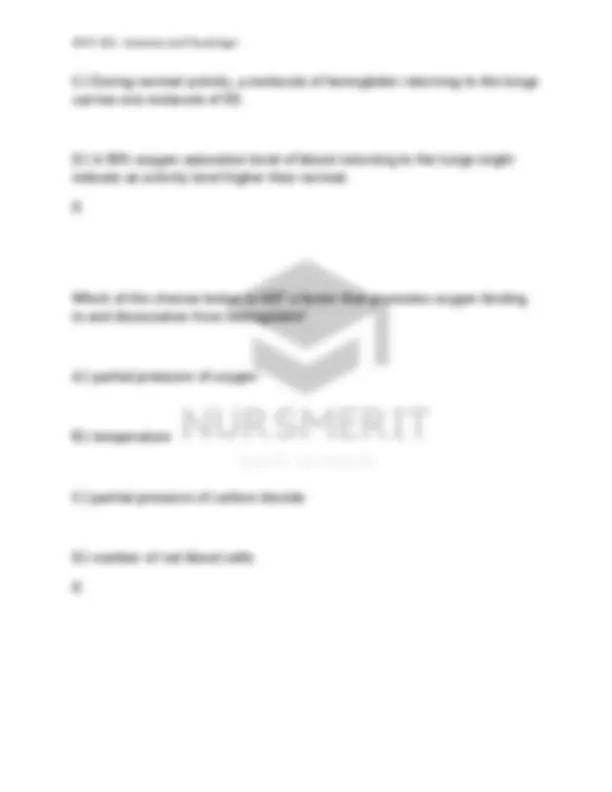
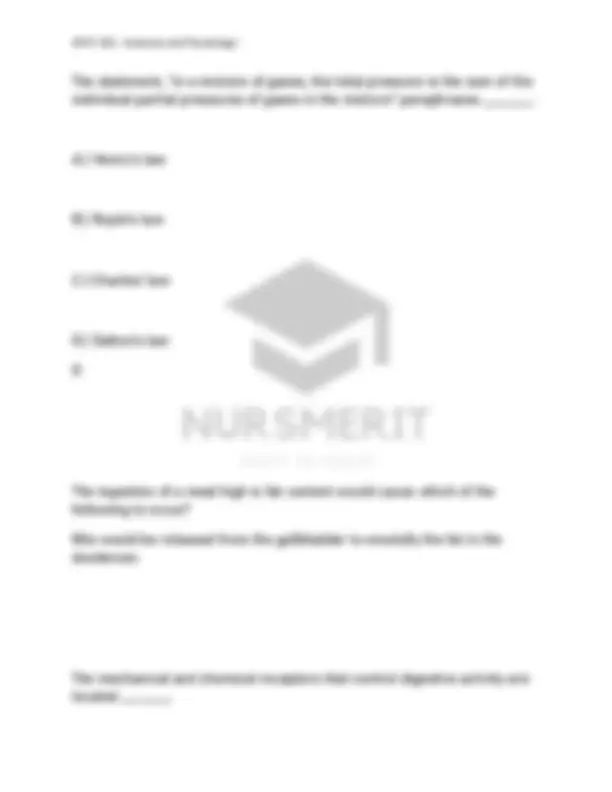
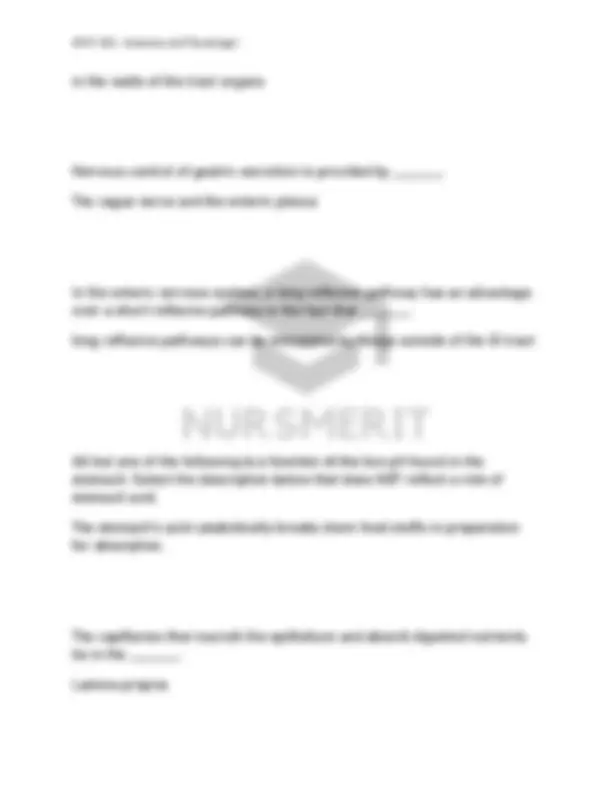
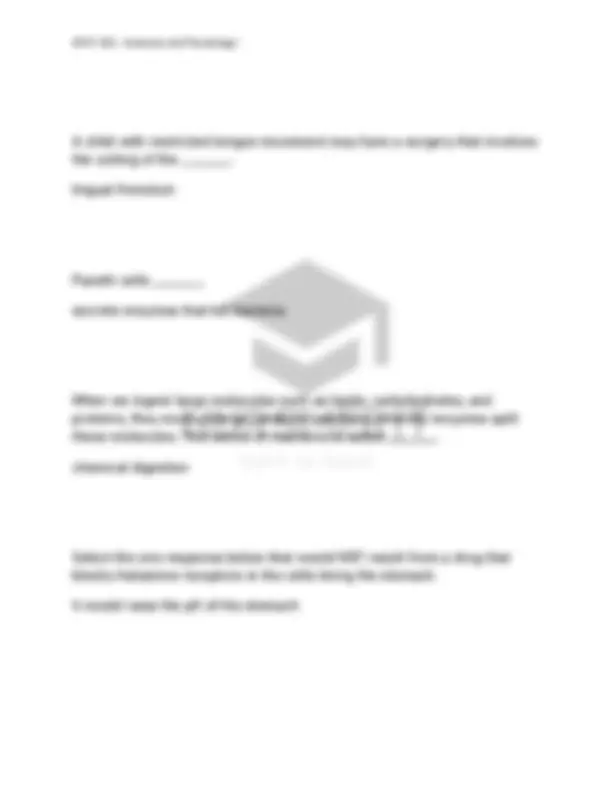
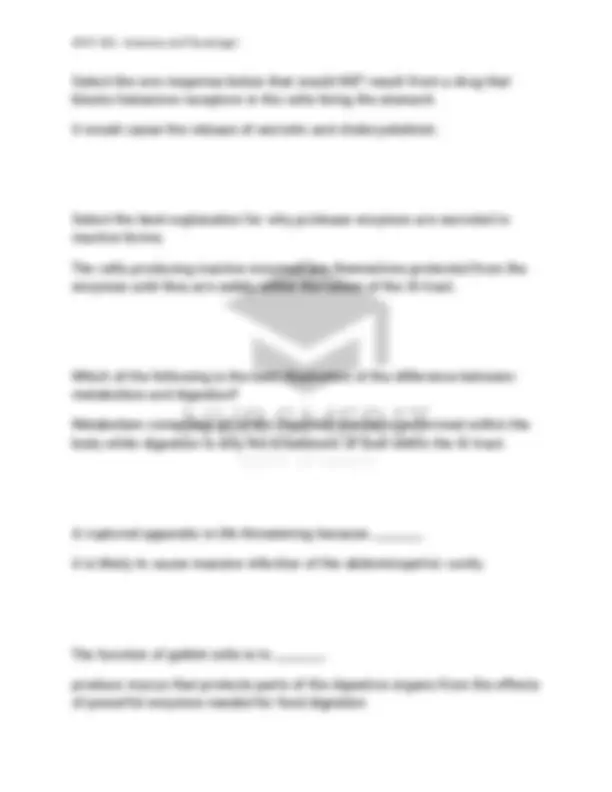
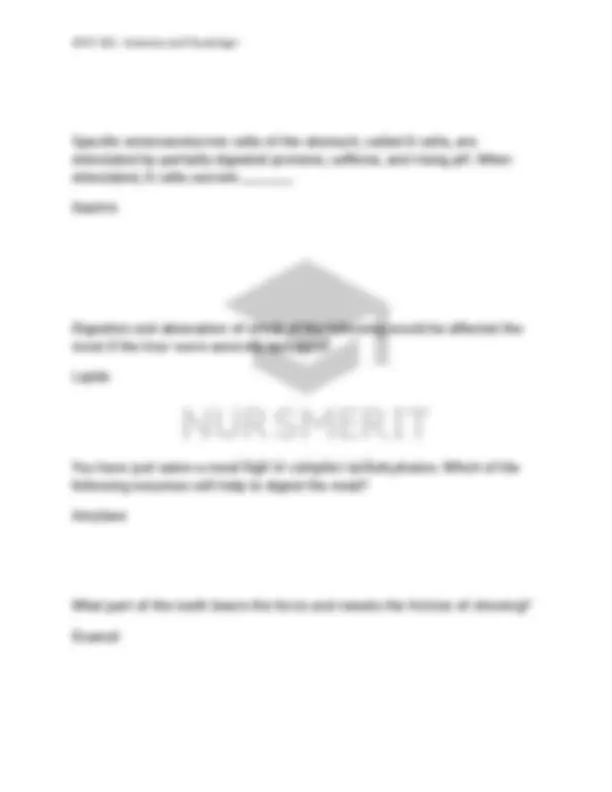
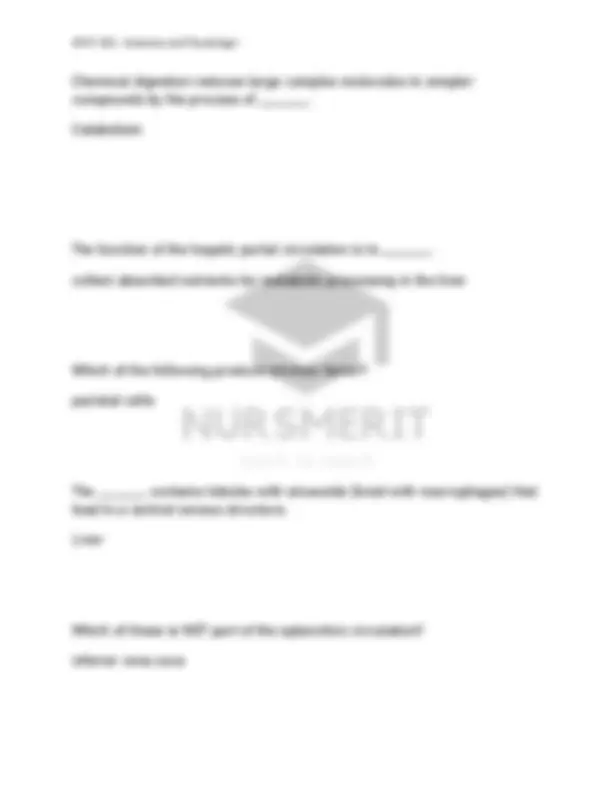
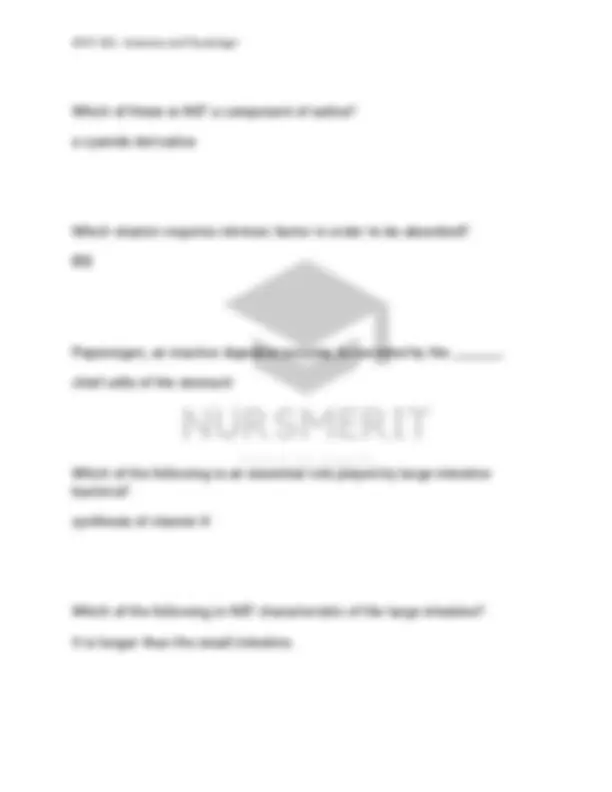
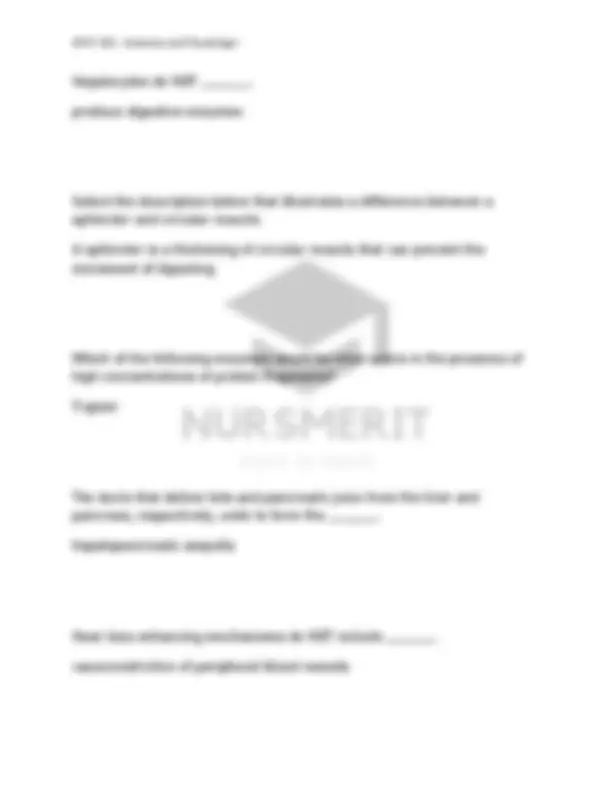
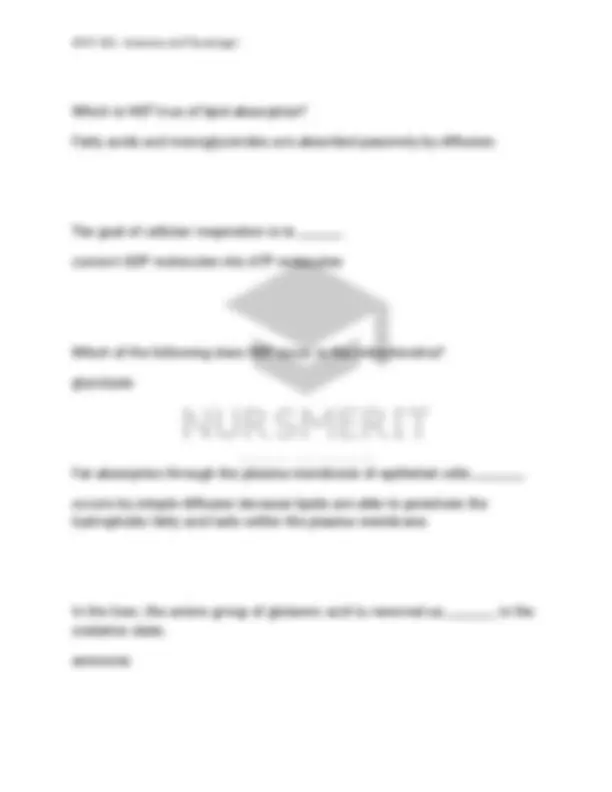
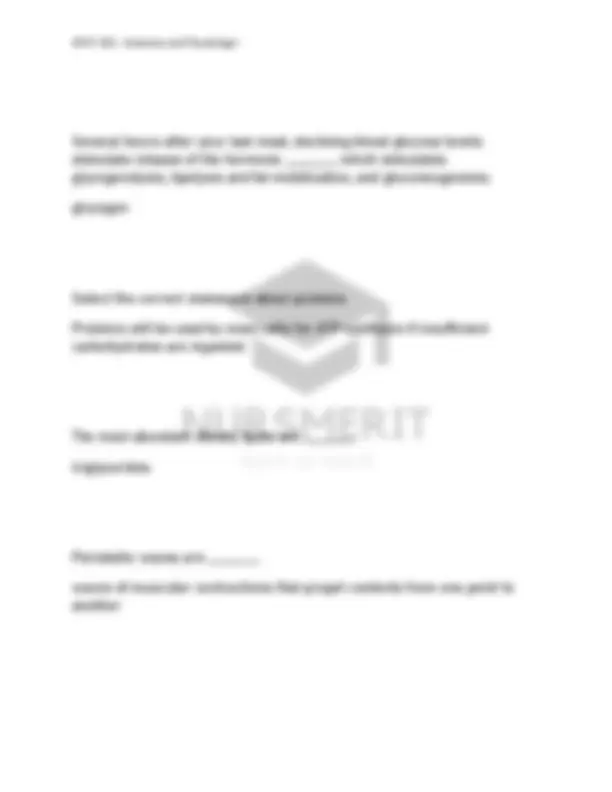
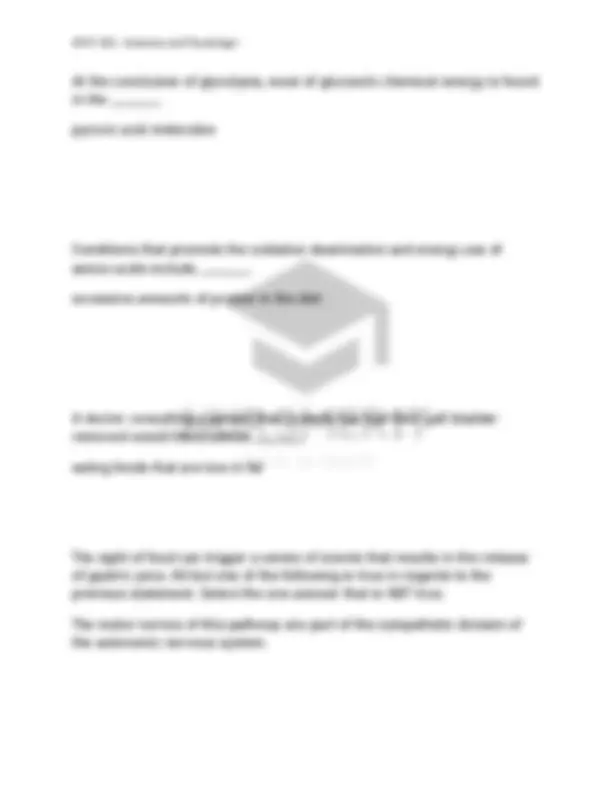
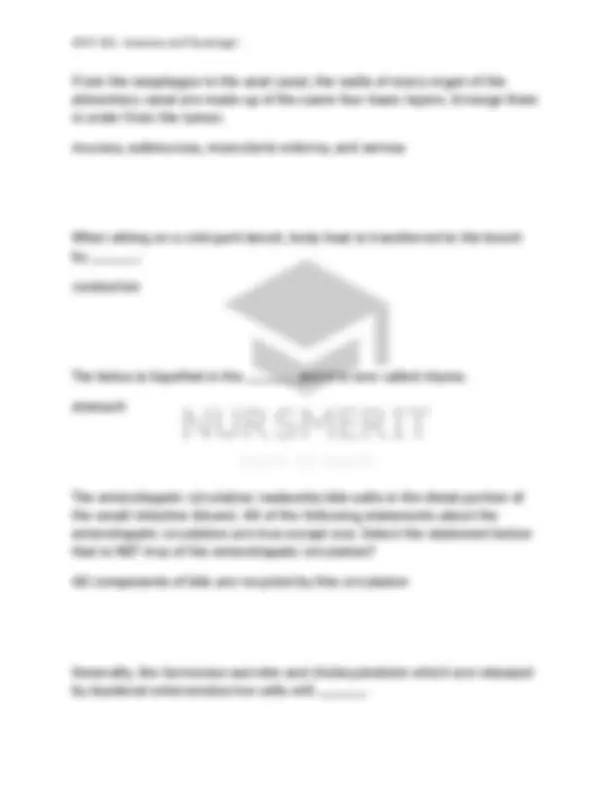
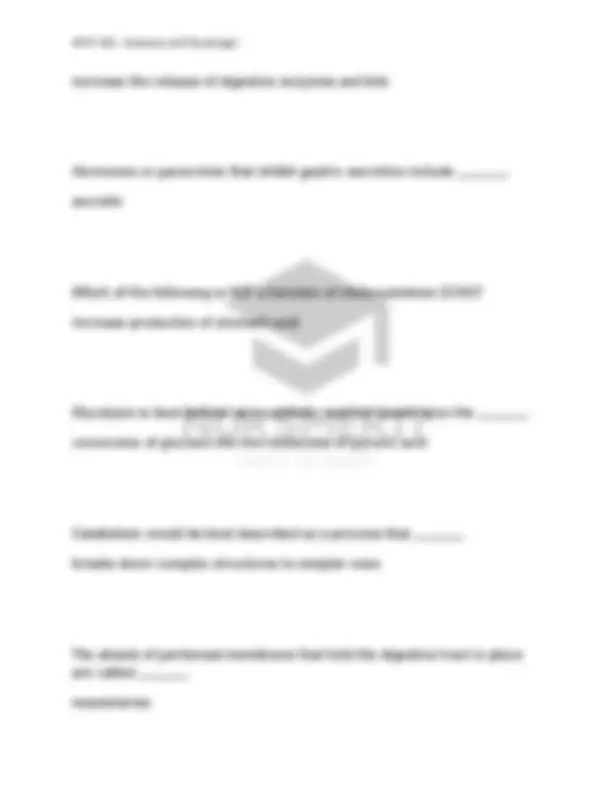
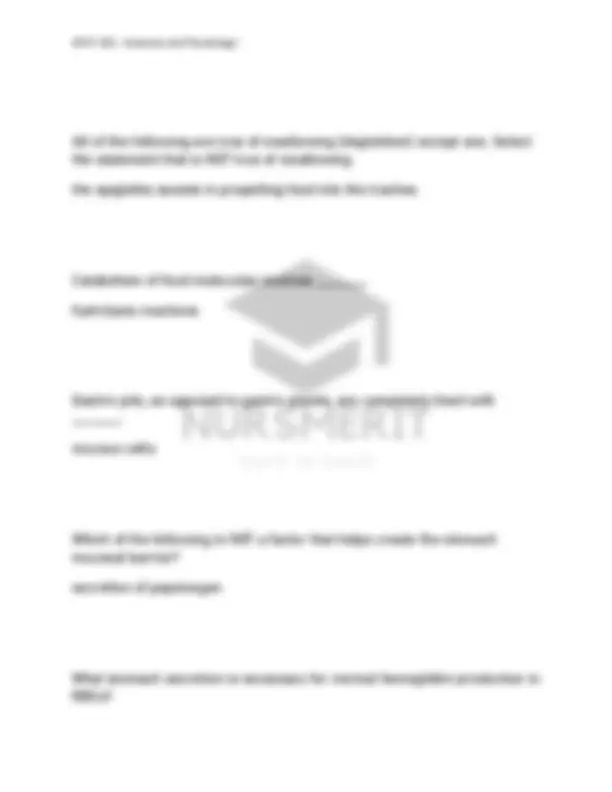
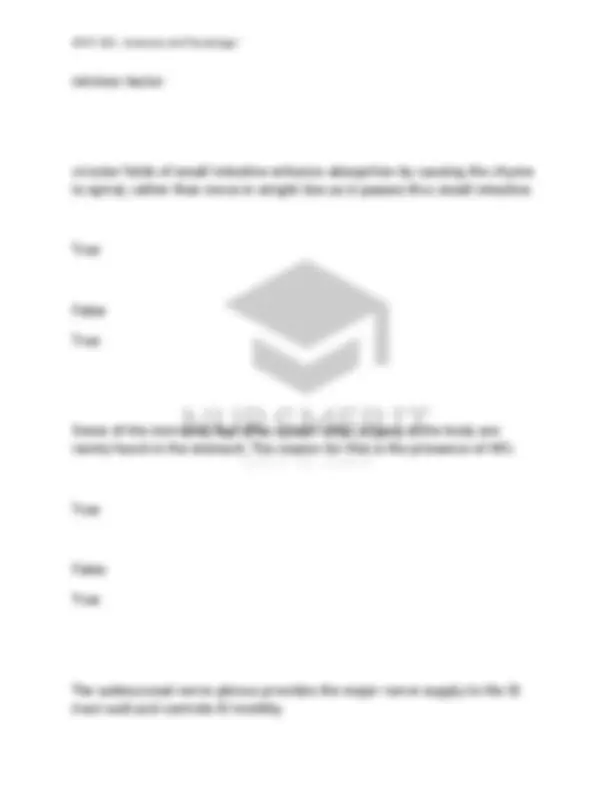
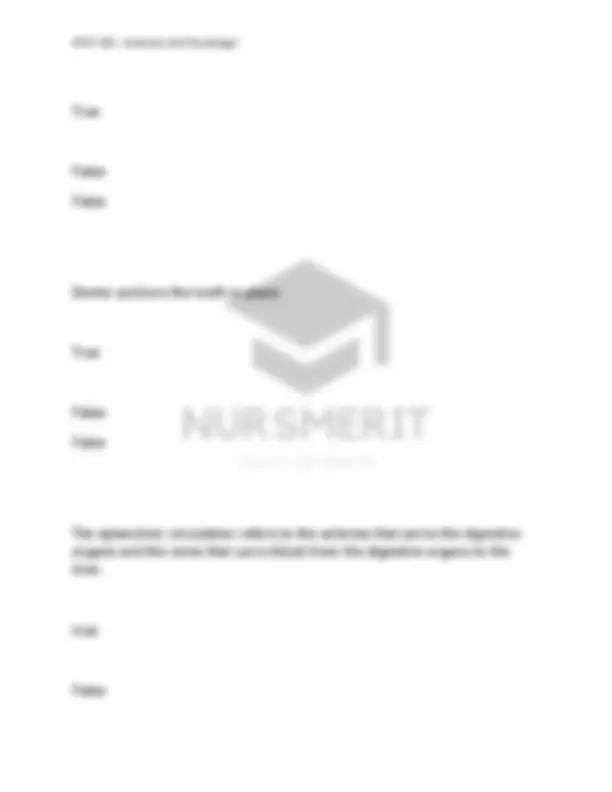
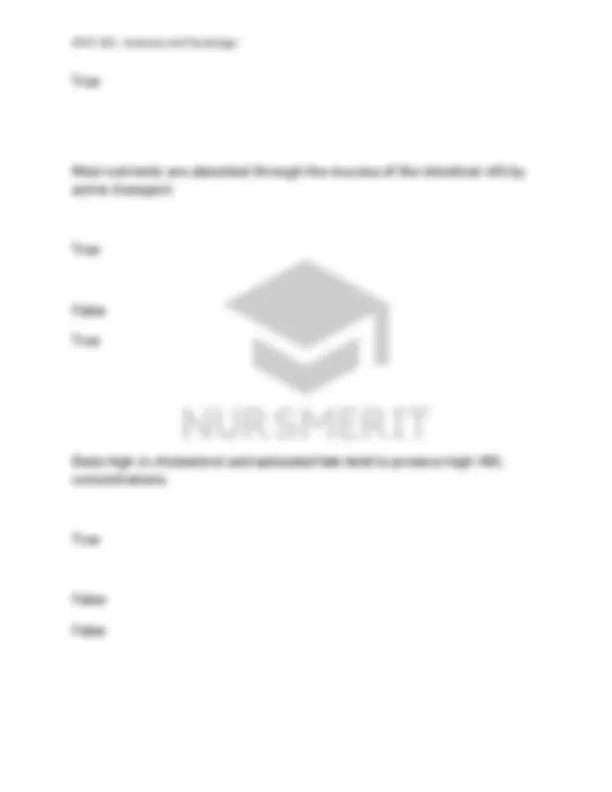
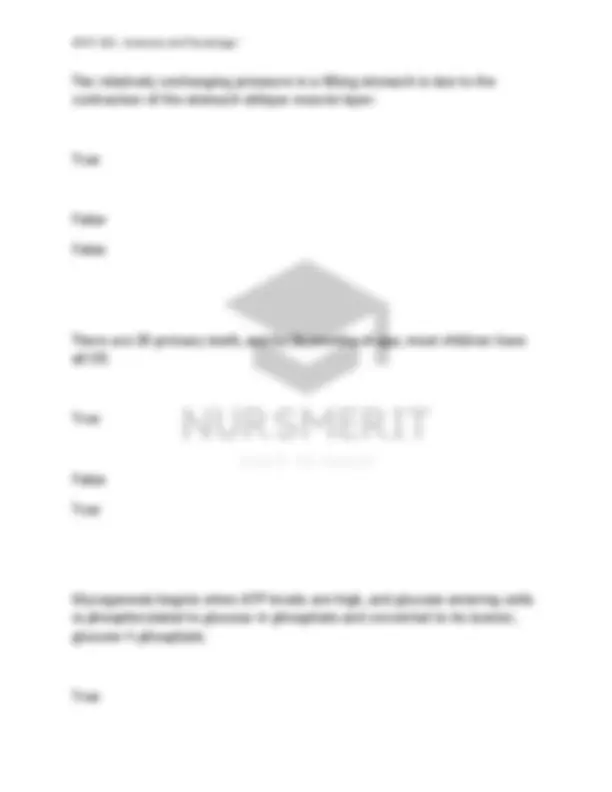
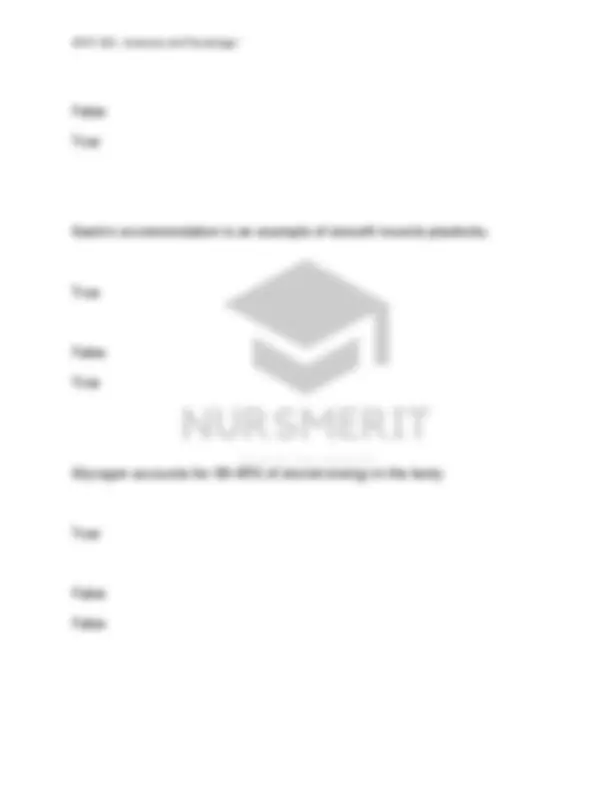
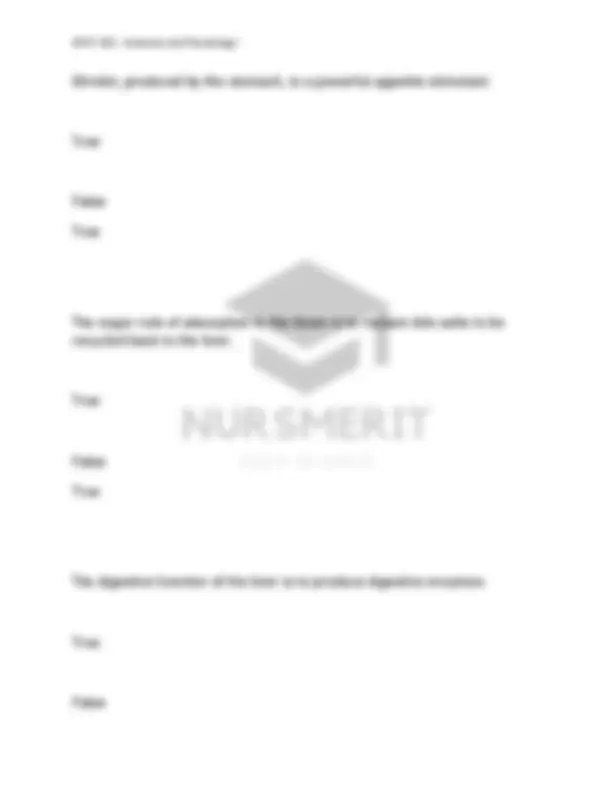

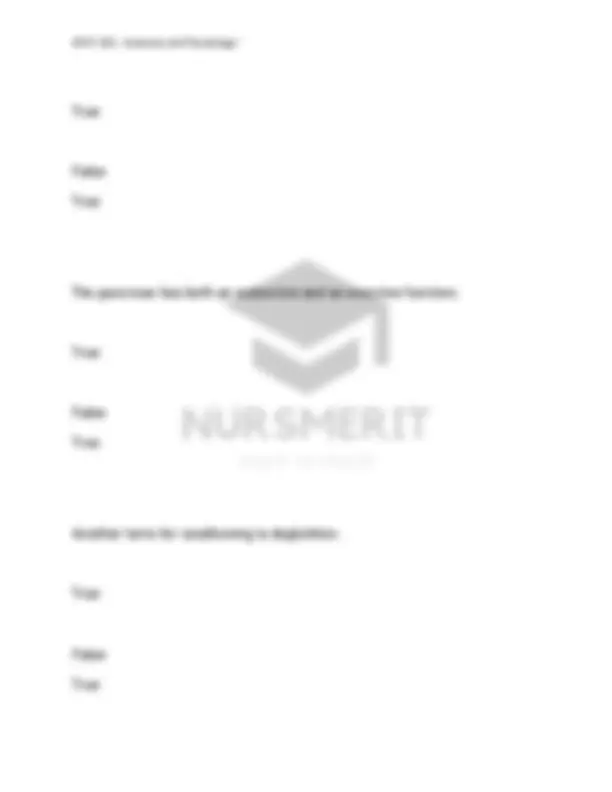
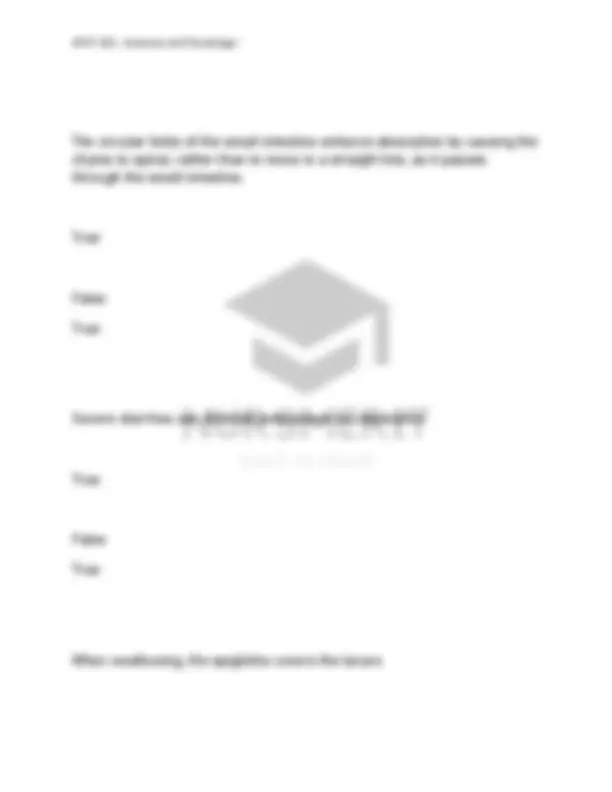

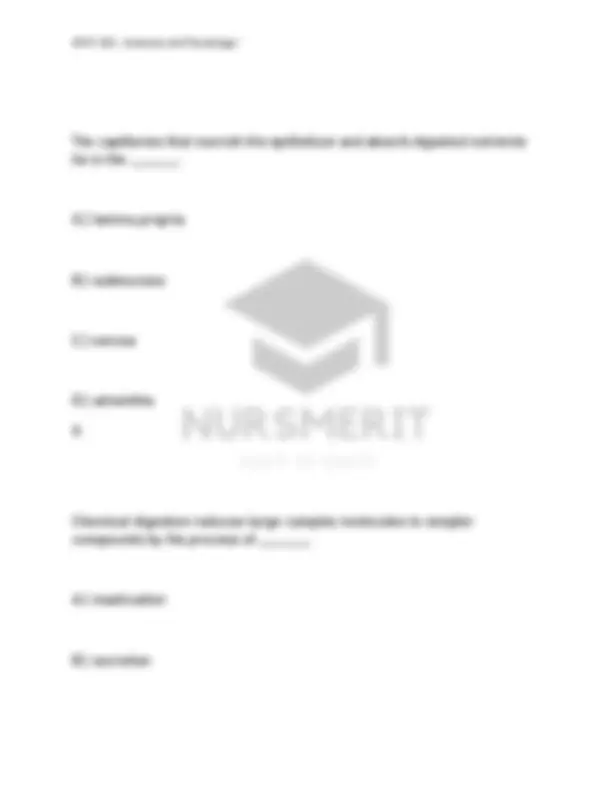
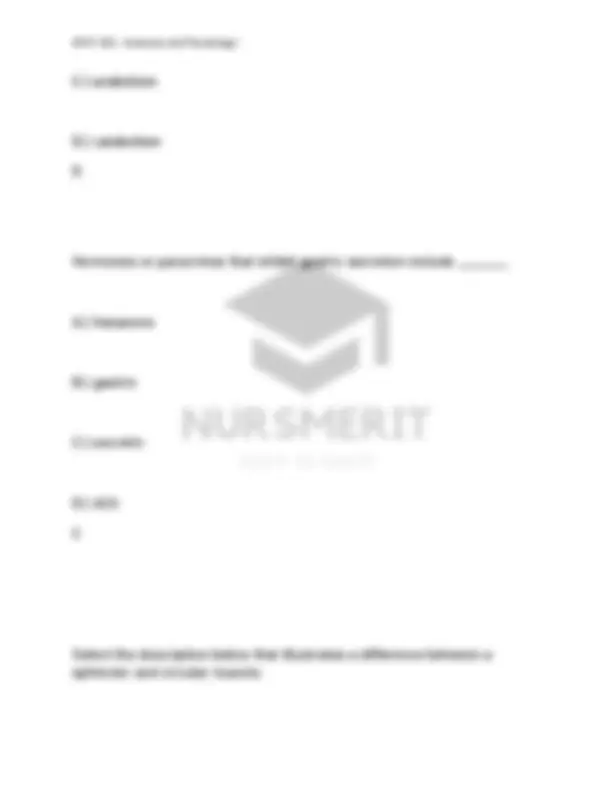
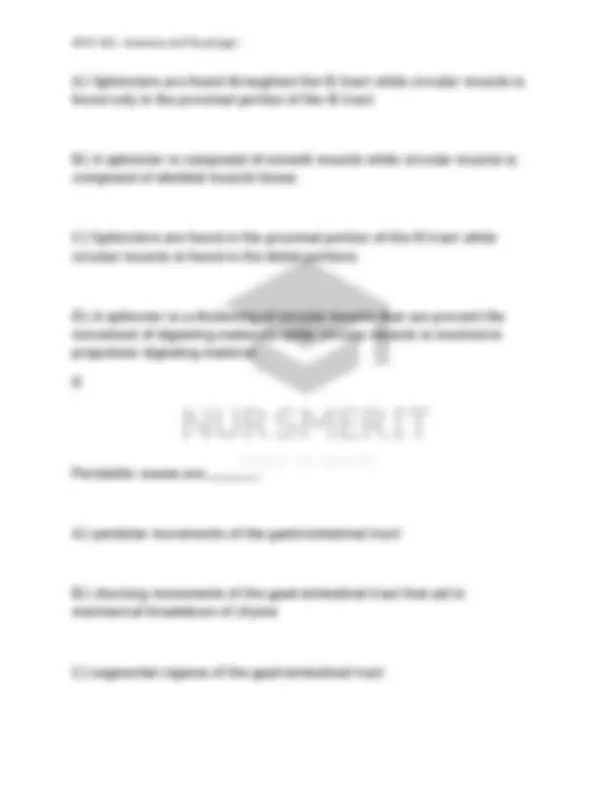
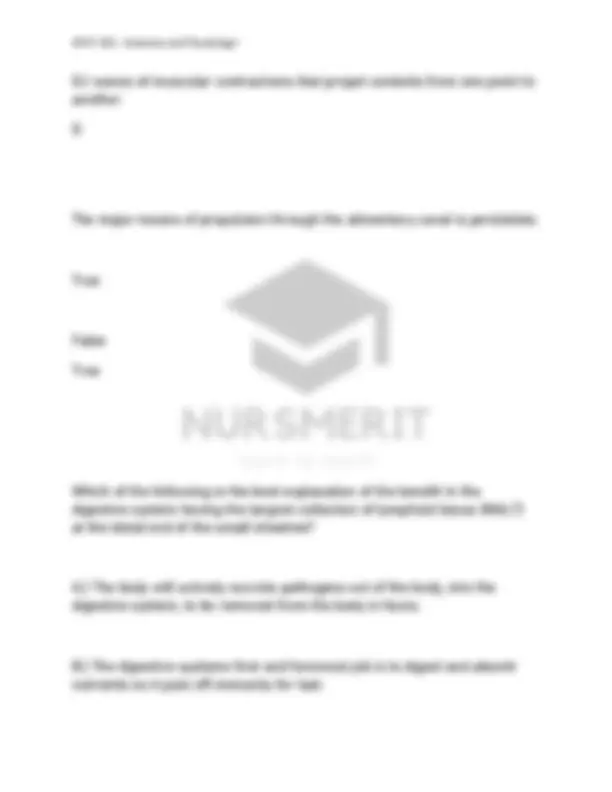
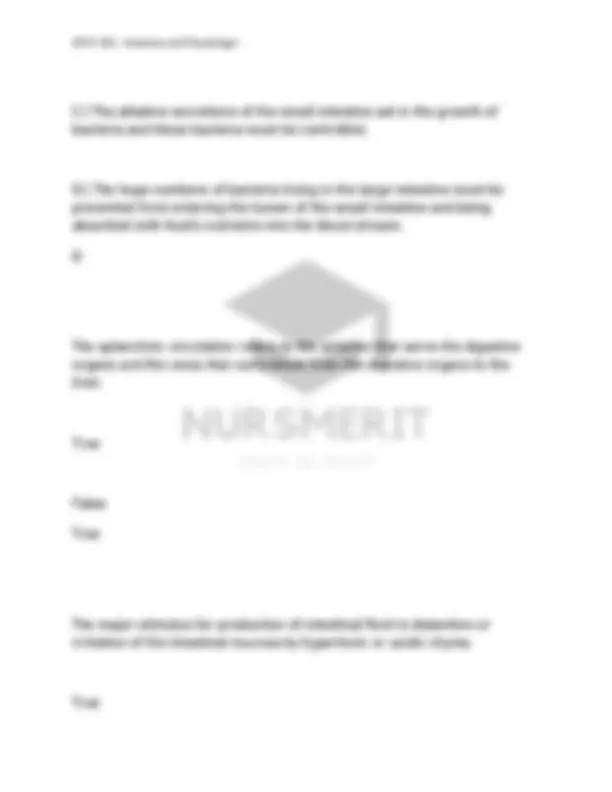
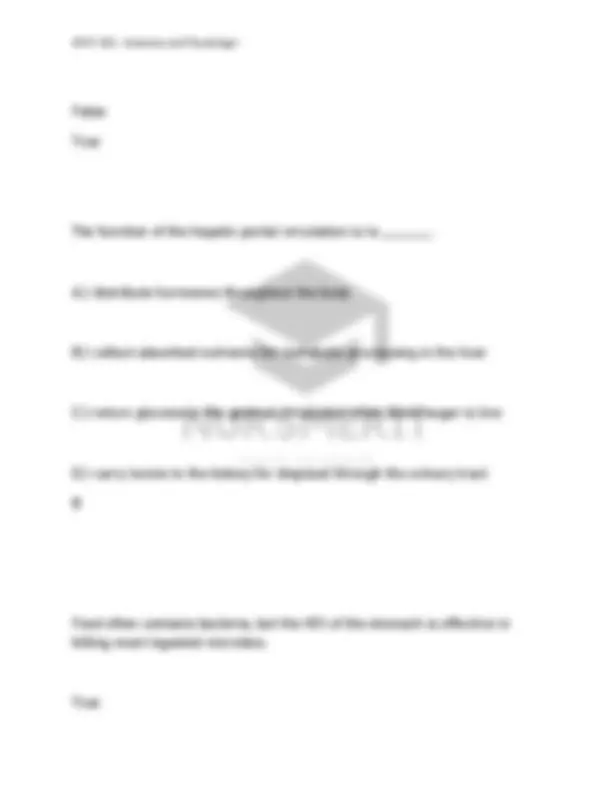
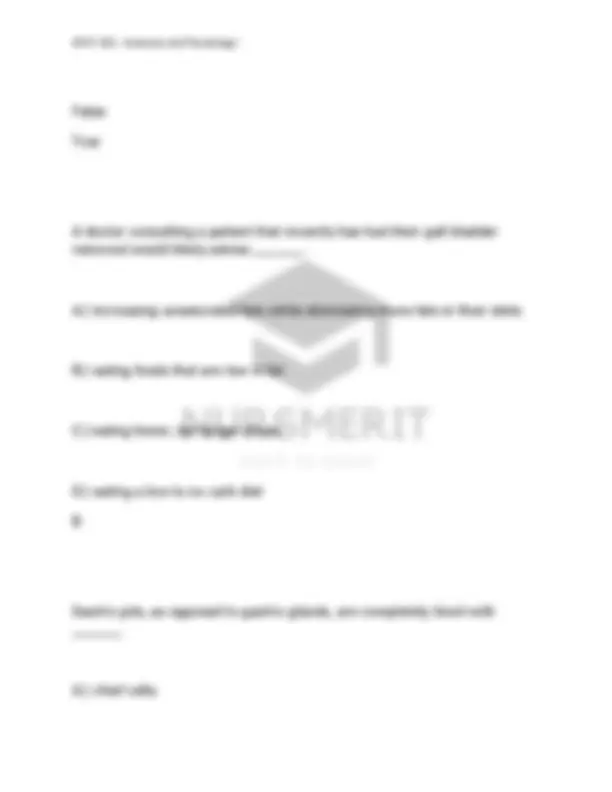
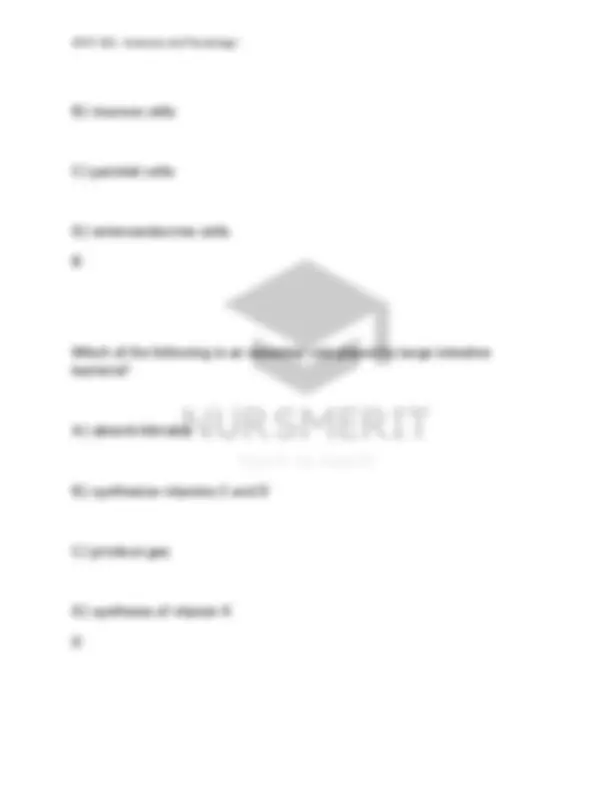
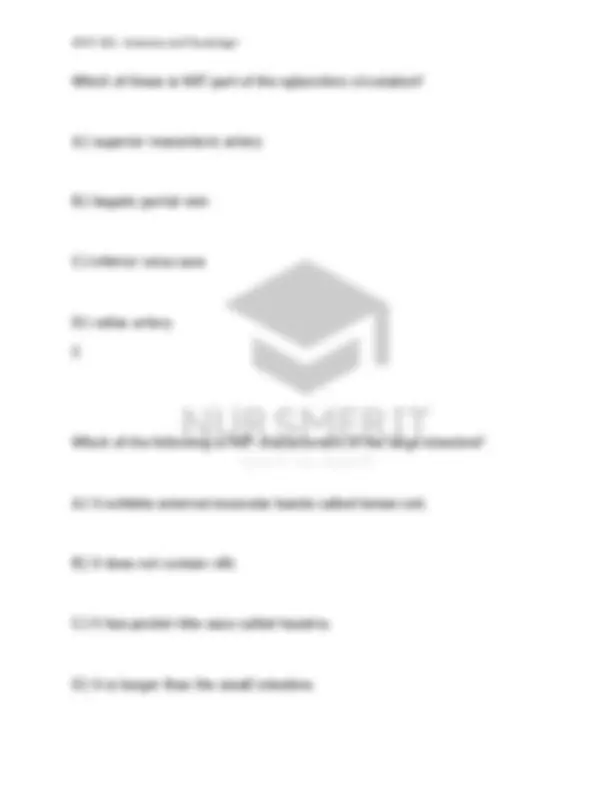
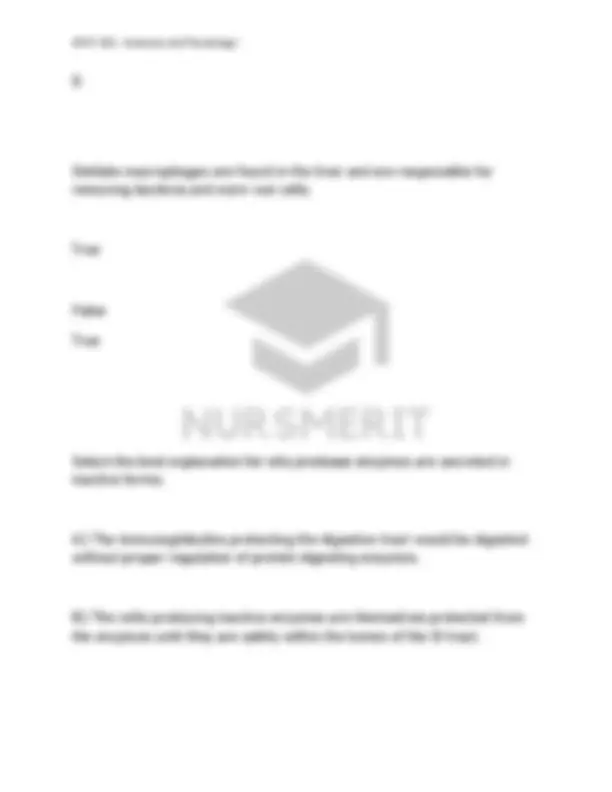
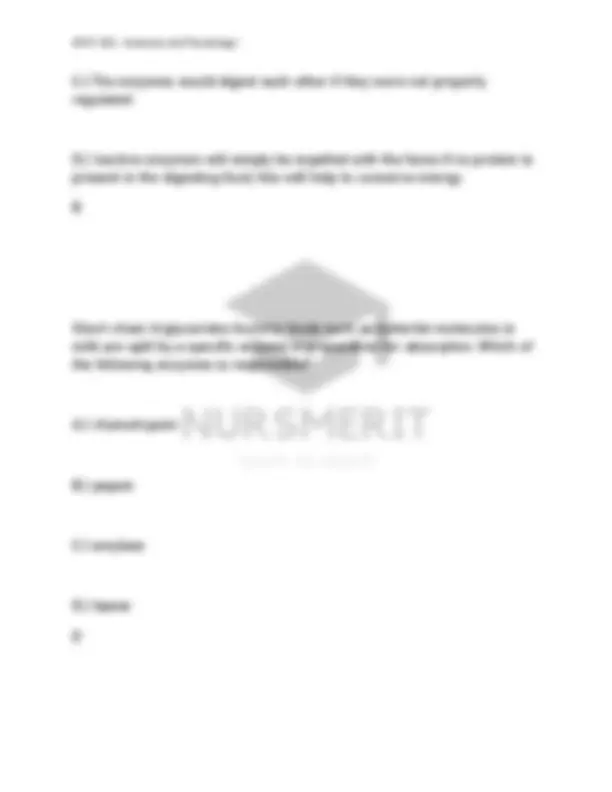
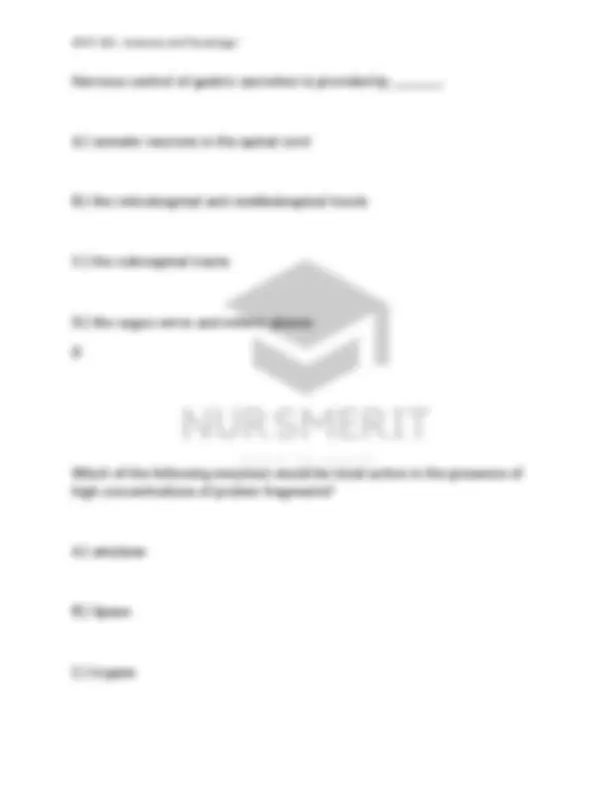
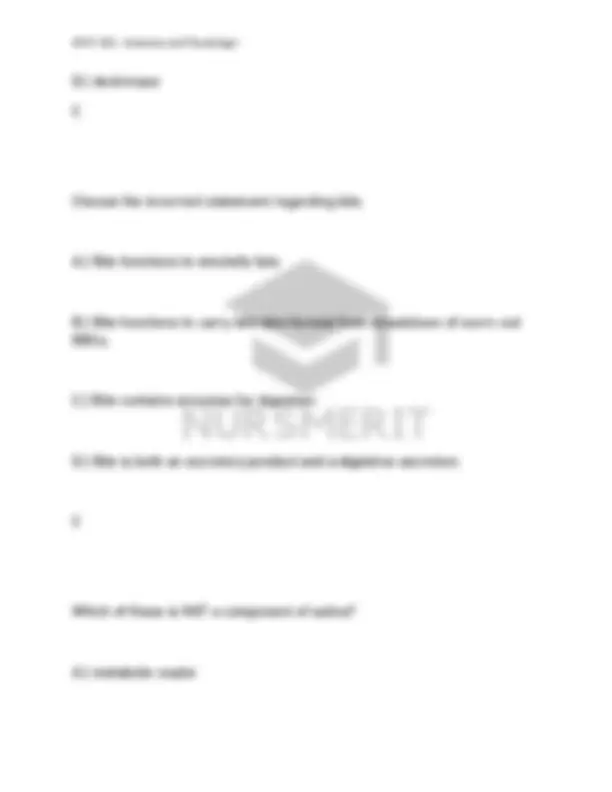
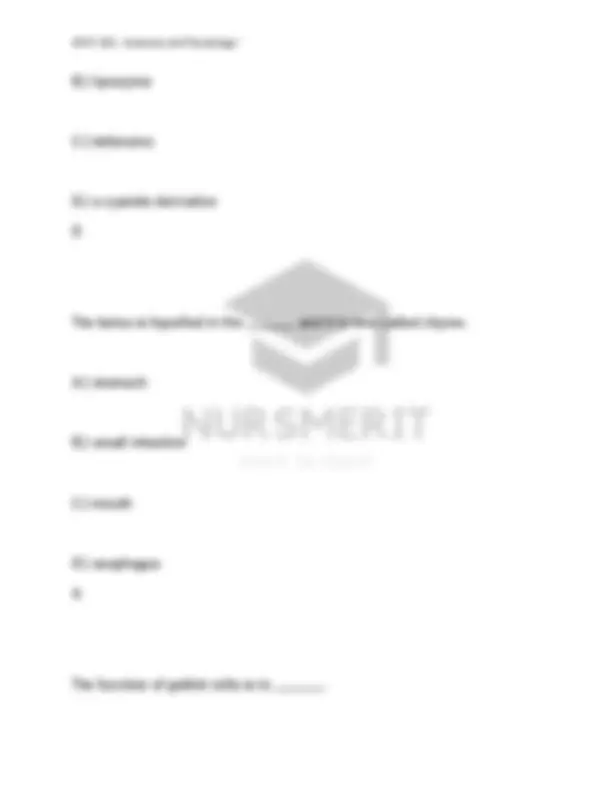
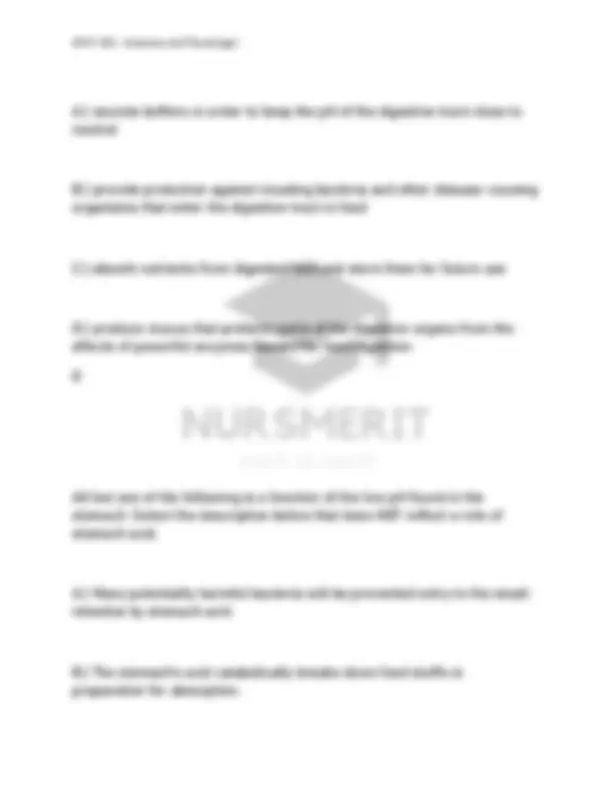

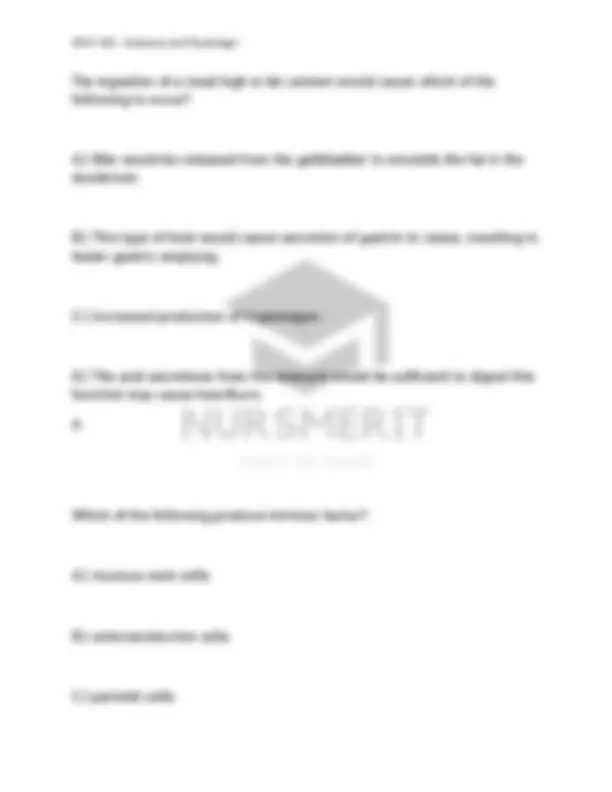


Study with the several resources on Docsity

Earn points by helping other students or get them with a premium plan


Prepare for your exams
Study with the several resources on Docsity

Earn points to download
Earn points by helping other students or get them with a premium plan
Community
Ask the community for help and clear up your study doubts
Discover the best universities in your country according to Docsity users
Free resources
Download our free guides on studying techniques, anxiety management strategies, and thesis advice from Docsity tutors
A set of practice questions and answers for the aphy 101 - anatomy and physiology i midterm exam. It covers various topics related to human anatomy and physiology, including heat transfer, lipid metabolism, digestive system functions, and energy metabolism. The questions are multiple-choice and provide a comprehensive overview of key concepts in the course.
Typology: Exams
1 / 210

This page cannot be seen from the preview
Don't miss anything!





























































































When sitting on a cold park bench, body heat is transferred to the bench by ________. A.) conduction B.) excretion C.) convection D.) radiation A It would not be healthy to eliminate all fats from your diet because they serve a useful purpose in maintaining the body.
True False True The major role of high-density lipoproteins (HDLs) is to store energy in the form of fat. True False False The most abundant dietary lipids in the diets of most Americans are triglycerides. True False
The sheets of peritoneal membrane that hold the digestive tract in place are called ________. A.) mesenteries B.) lamina propria C.) mucosal lining D.) serosal lining A Chemical digestion reduces large complex molecules to simpler compounds by the process of ________. A.) excretion B.) anabolism
C.) catabolism D.) mastication C Which of the following is an essential role played by large intestine bacteria? A.) synthesize vitamins C and D B.) synthesis of vitamin K C.) produce gas D.) absorb bilirubin B Peristaltic waves are ________. A.) pendular movements of the gastrointestinal tract
False False The only essential function of the stomach is to begin the digestion of proteins. True False False Select the correct statement about the regulation of gastric secretion. A.) Gastric secretion can be stimulated before food has entered the mouth. B.) Vagus stimulation of the stomach results in decreased secretion of gastric juice. C.) Gastric secretion is enhanced by very low pH (below a pH of 2).
D.) The presence of food in the stomach prevents hormonal control of gastric secretion. A Pepsinogen, an inactive digestive enzyme, is secreted by the ________. A.) parietal cells of the stomach B.) chief cells of the stomach C.) goblet cells of the small intestine D.) Brunner's glands in the duodenum B Fat absorption through the plasma membrane of epithelial cells ________.
D.) defensins A The chemical and mechanical processes of food breakdown are called ________. A.) ingestion B.) secretion C.) digestion D.) absorption C Which of the following is the best illustration of the difference between metabolism and digestion? A.) Metabolism comprises all of the chemical reactions preformed within the body while digestion is only the breakdown of food within the GI tract.
B.) Digestion requires enzymes for it to take place while metabolism does not necessarily need or use them. C.) Digestion has a wide variety of chemical reactions while metabolism is restricted to only a few reaction types. D.) Digestions must happen first for metabolism to follow it. A Minerals required by the body in moderate amounts include all of the following EXCEPT ________. A.) calcium and phosphorus B.) sulfur and potassium C.) sodium and chlorine D.) iron and selenium D
When ketone bodies are present in the blood and urine in large amounts, it usually indicates increased metabolism of ________. A.) fatty acids B.) lactic acid C.) glycogen D.) amino acids A Which of the following is NOT a function of low-density-lipoproteins (LDLs)? A.) transport cholesterol from the peripheral tissues to the liver
B.) make cholesterol available to tissue cells for hormone synthesis C.) make cholesterol available to tissue cells for membrane formation D.) assist in the storage of cholesterol when supply exceeds demand A In India, rice is a large part of the diet. Lack of which vitamin in rice would lead to higher levels of blindness in this population? A.) vitamin A B.) vitamin D C.) vitamin E D.) vitamin C A
D.) glycolysis B The amount of protein needed by each person is determined by their age, size, metabolic rate, and the need to build new proteins. True False True A recent health screening revealed a low-density-lipoprotein (LDL) level over 130. Which of the following should be prescribed? A.) statins B.) iron C.) glucagon
D.) insulin A Which of the following is the major role of leptin in the body? A.) promote weight loss with activity B.) increase appetite and food intake C.) shrink fat stores D.) protect against weight loss during nutritional deprivation B The ingestion of which nutrient type results in the greatest food-induced thermogenesis? A.) carbohydrates
A.) provide protection against invading bacteria and other disease-causing organisms that enter the digestive tract in food B.) produce mucus that protects parts of the digestive organs from the effects of powerful enzymes needed for food digestion C.) absorb nutrients from digested food and store them for future use D.) secrete buffers in order to keep the pH of the digestive tract close to neutral B Which of the following enzymes would be most active in the presence of high concentrations of protein fragments? A.) lipase B.) trypsin C.) dextrinase
D.) amylase B The absorptive effectiveness of the small intestine is enhanced by increasing the surface area of the mucosal lining. Which of the following accomplish this task? A.) Brunner's glands and Peyer patches B.) villi, and microvilli C.) the vast array of digestive enzymes D.) the rugae and haustra B All the chemical and mechanical phases of digestion from the mouth through the small intestine are directed toward changing food into forms that can pass through the epithelial cells lining the mucosa into the underlying blood and lymphatic vessels.